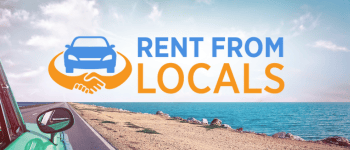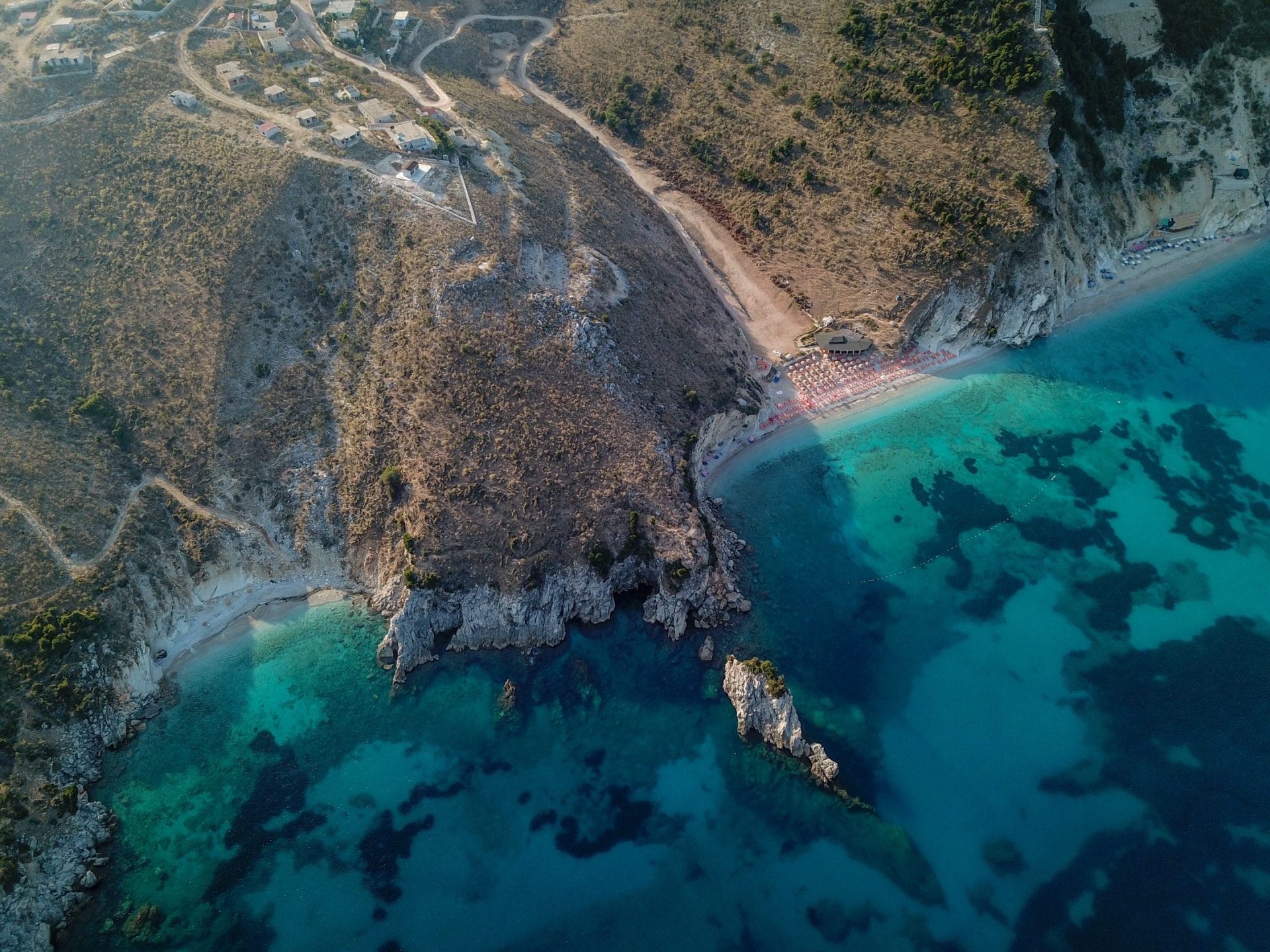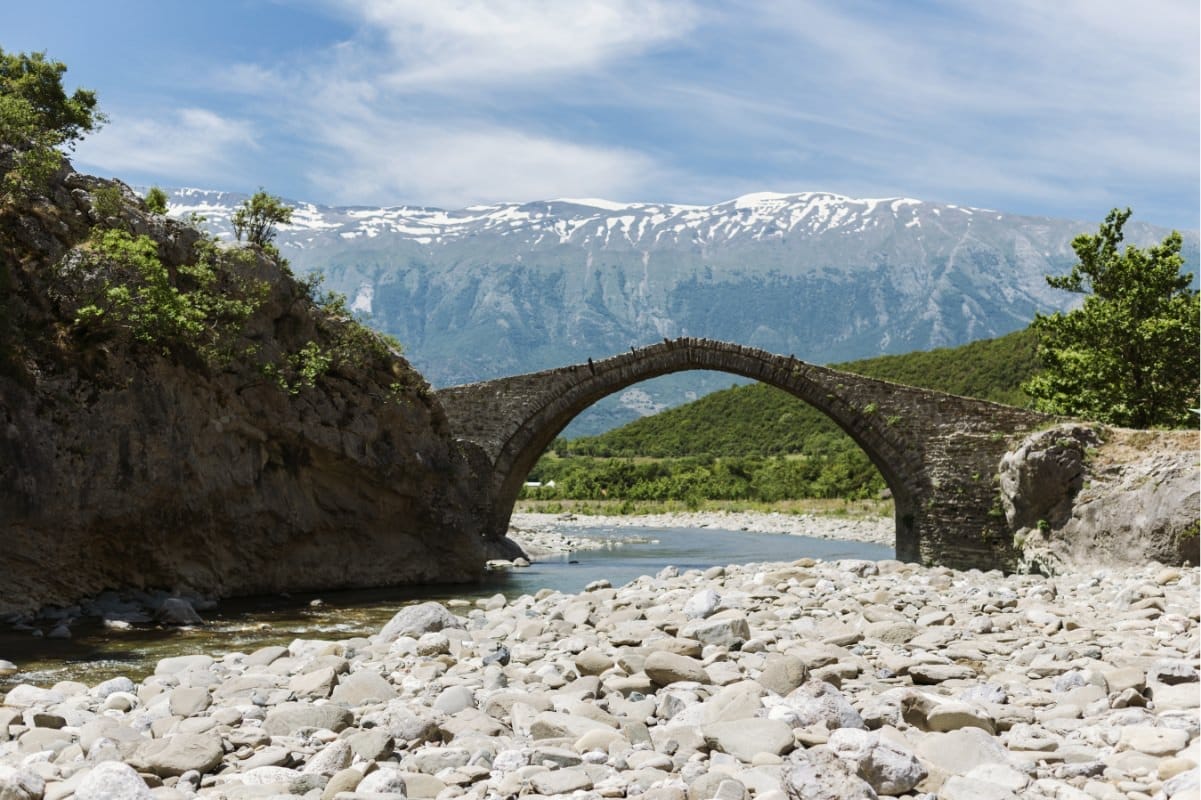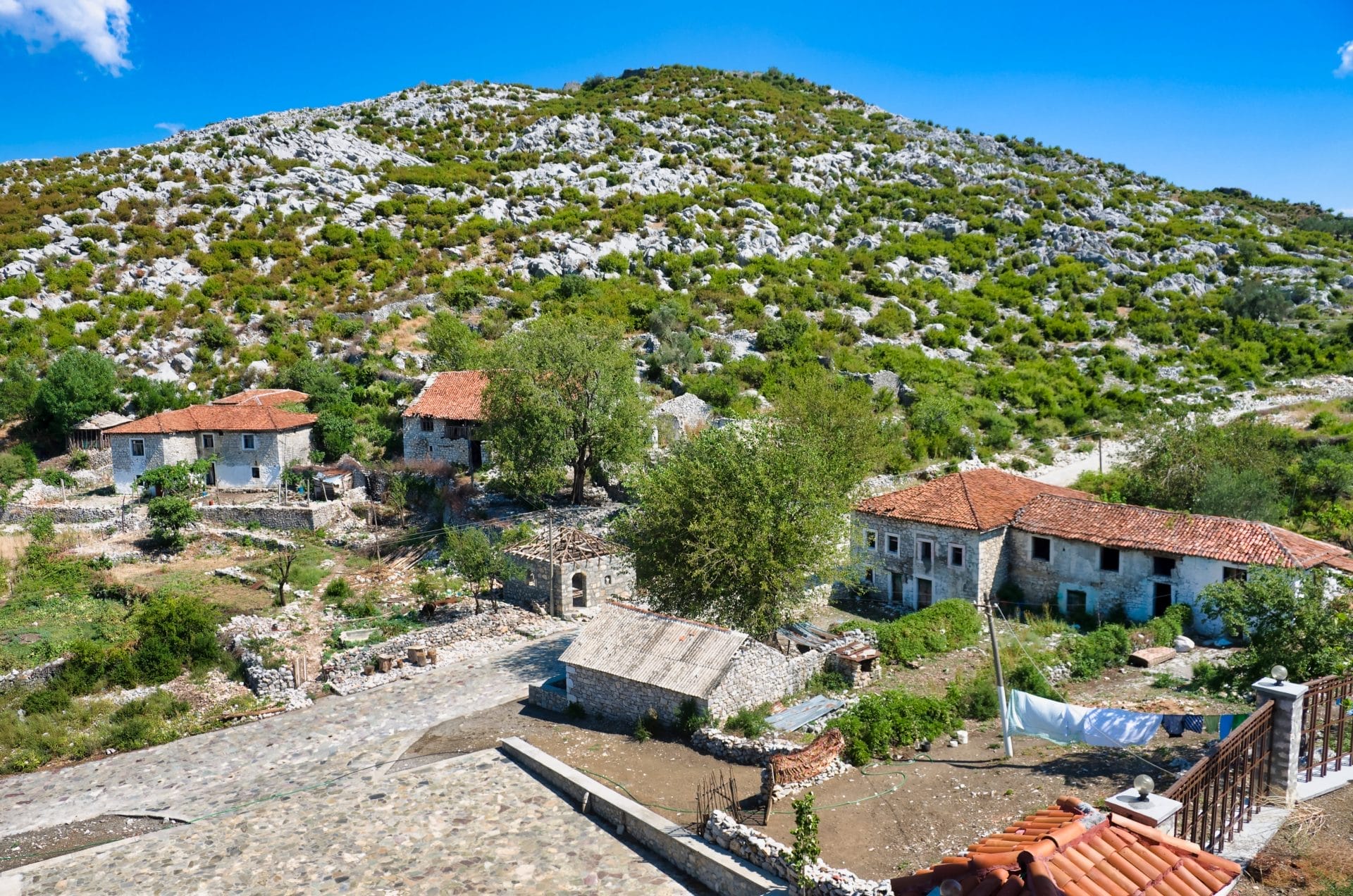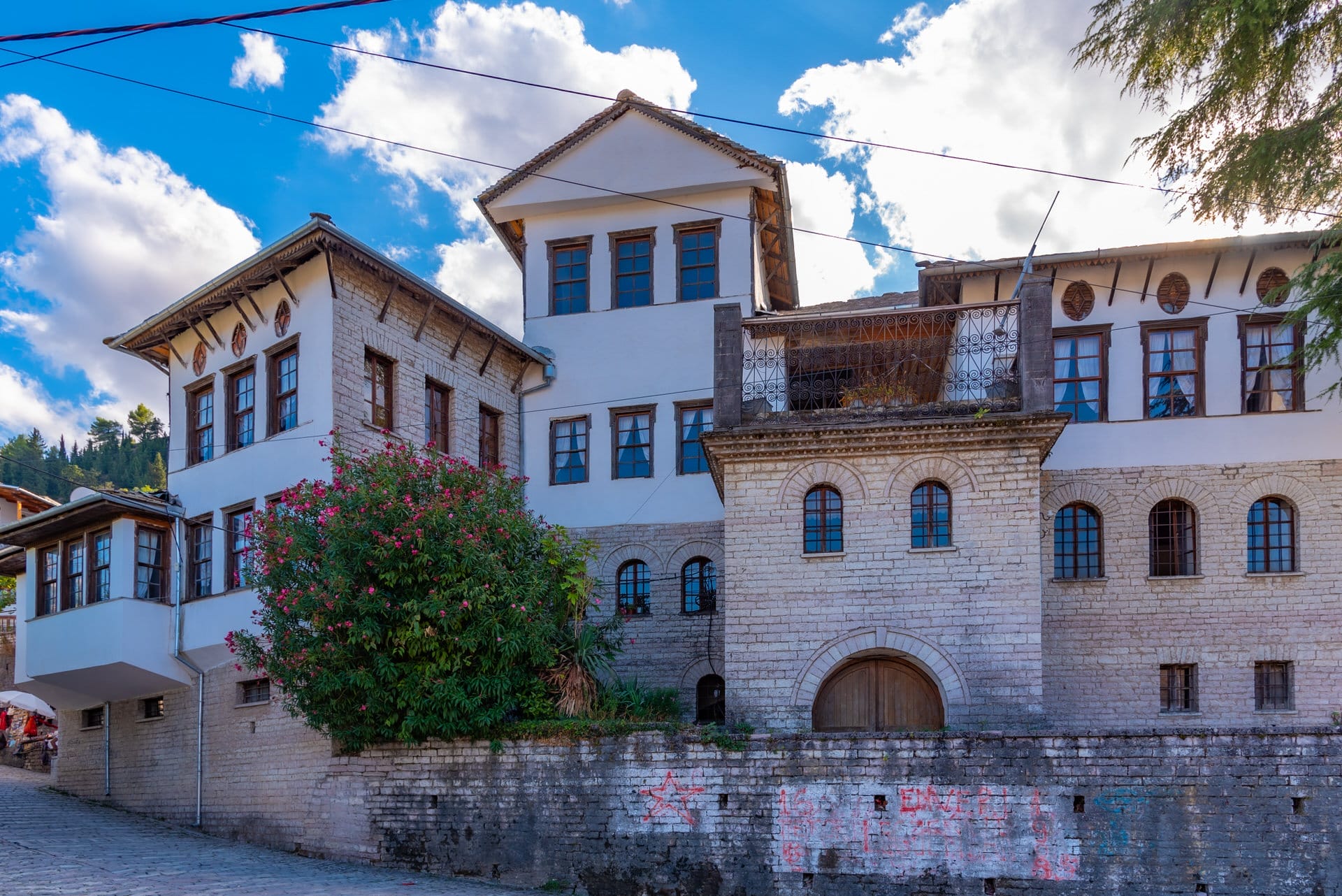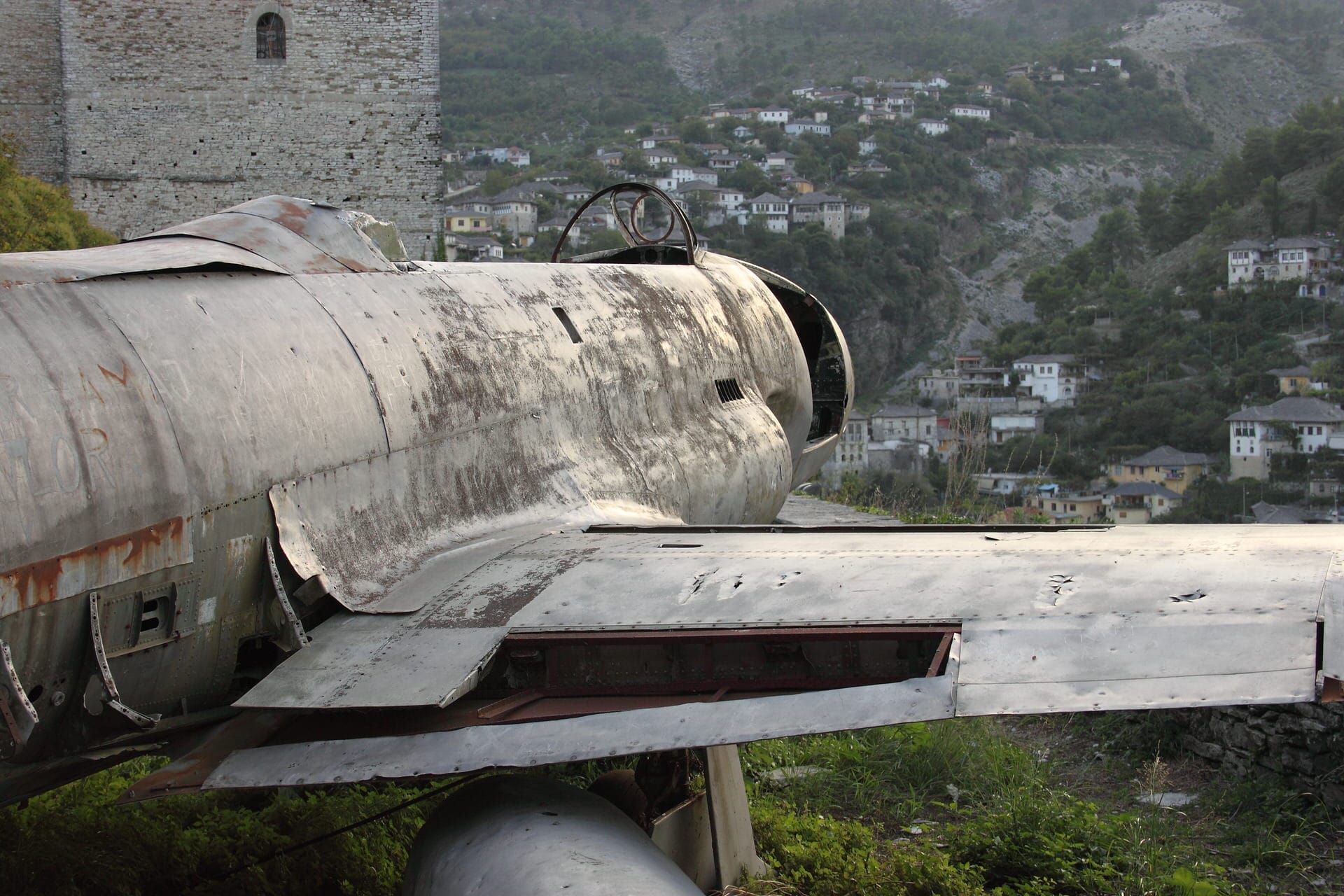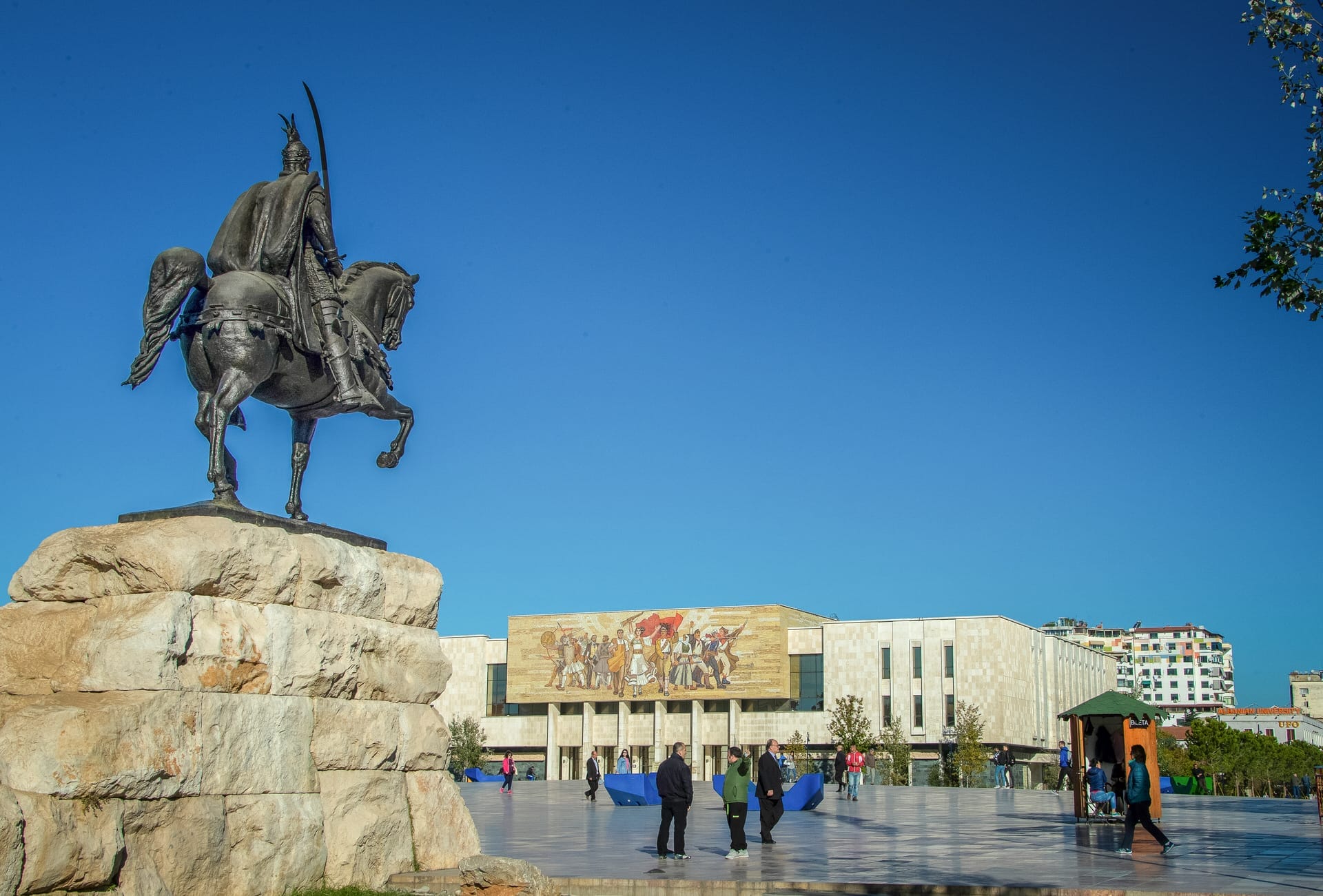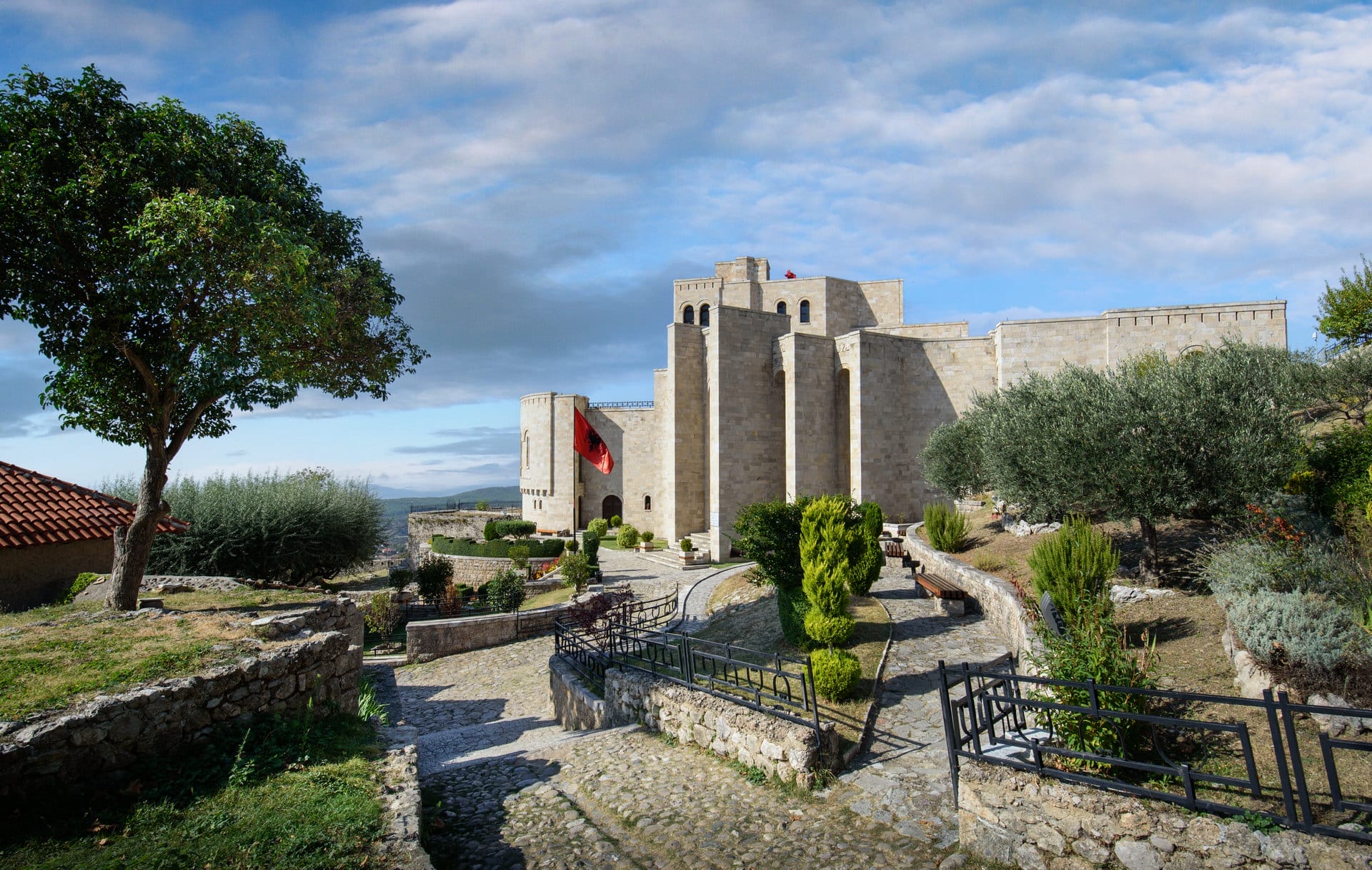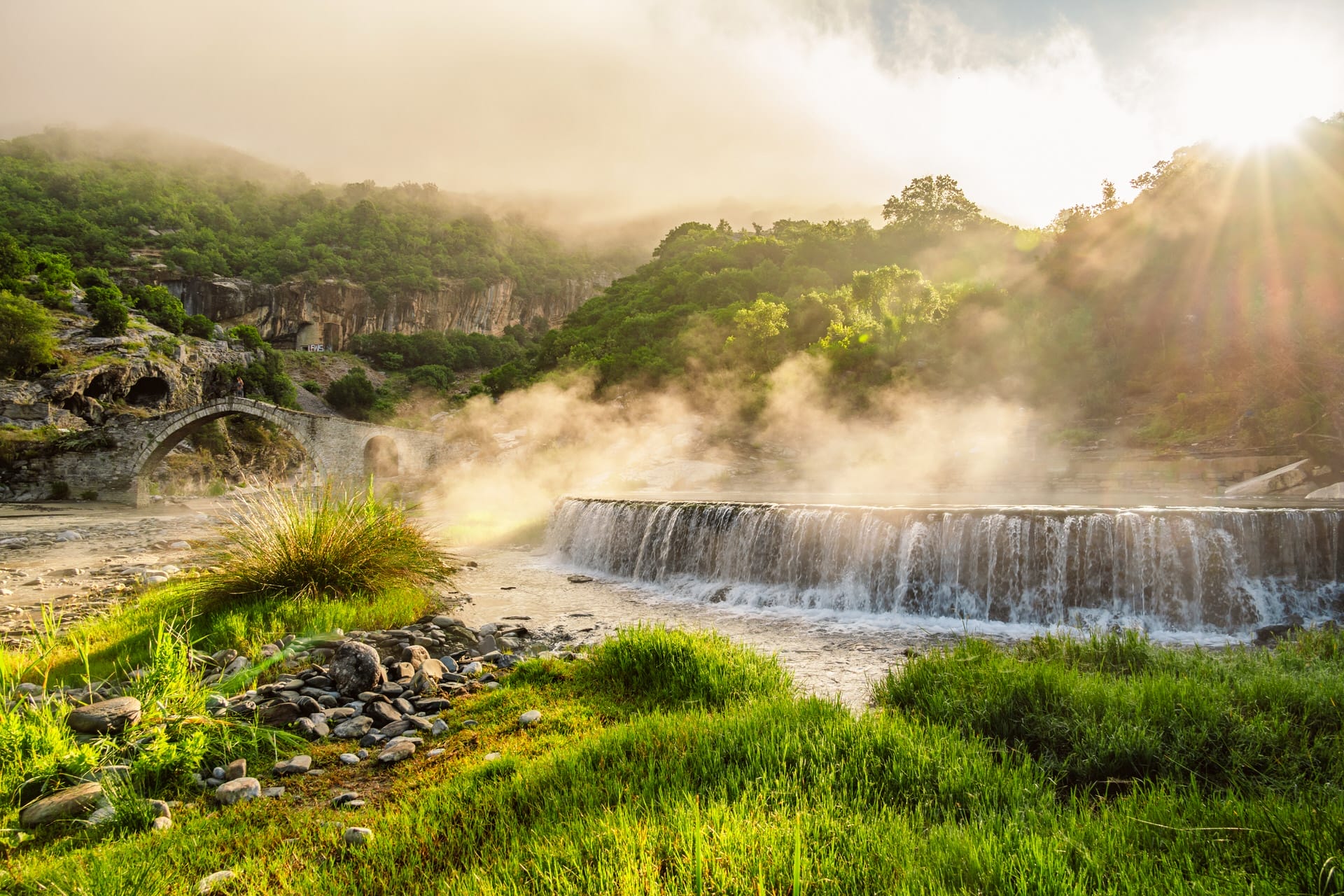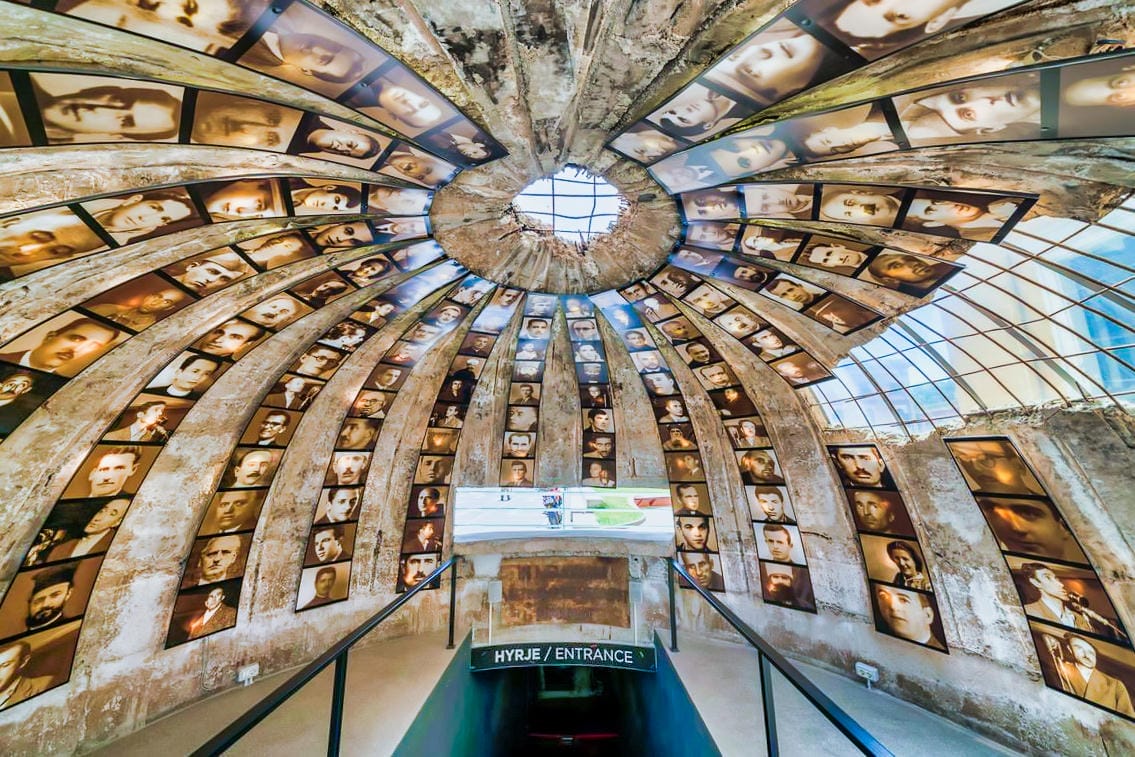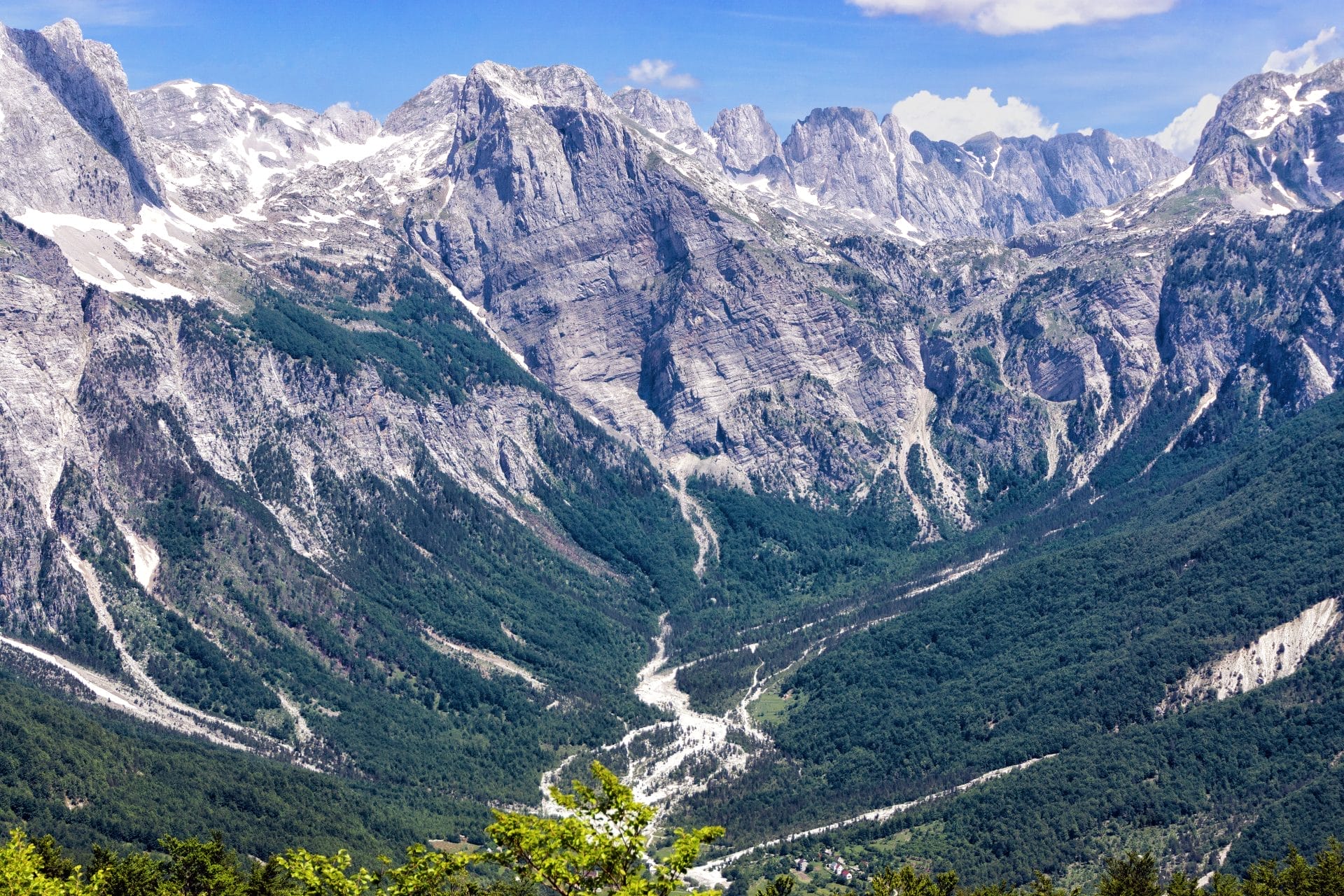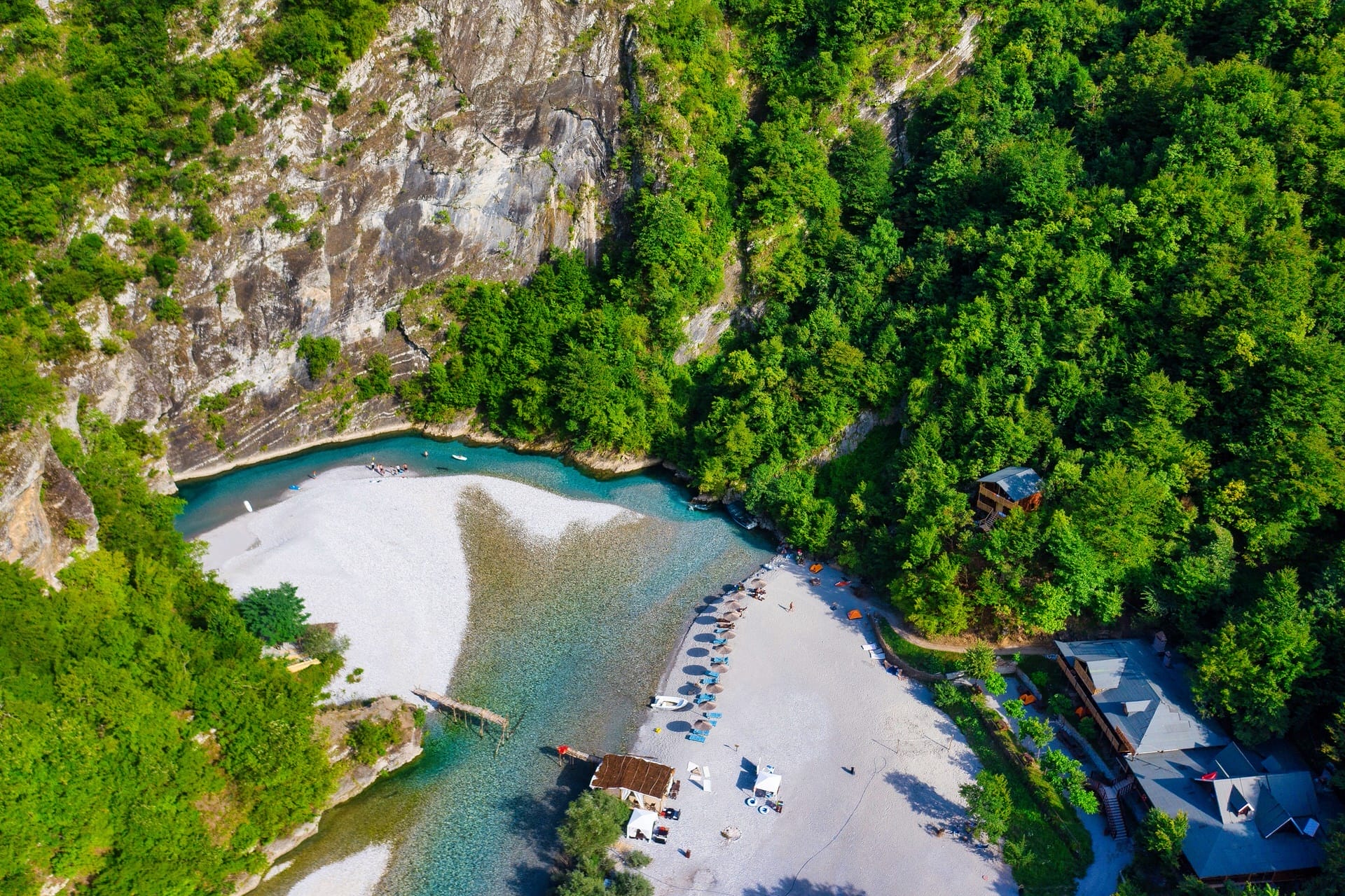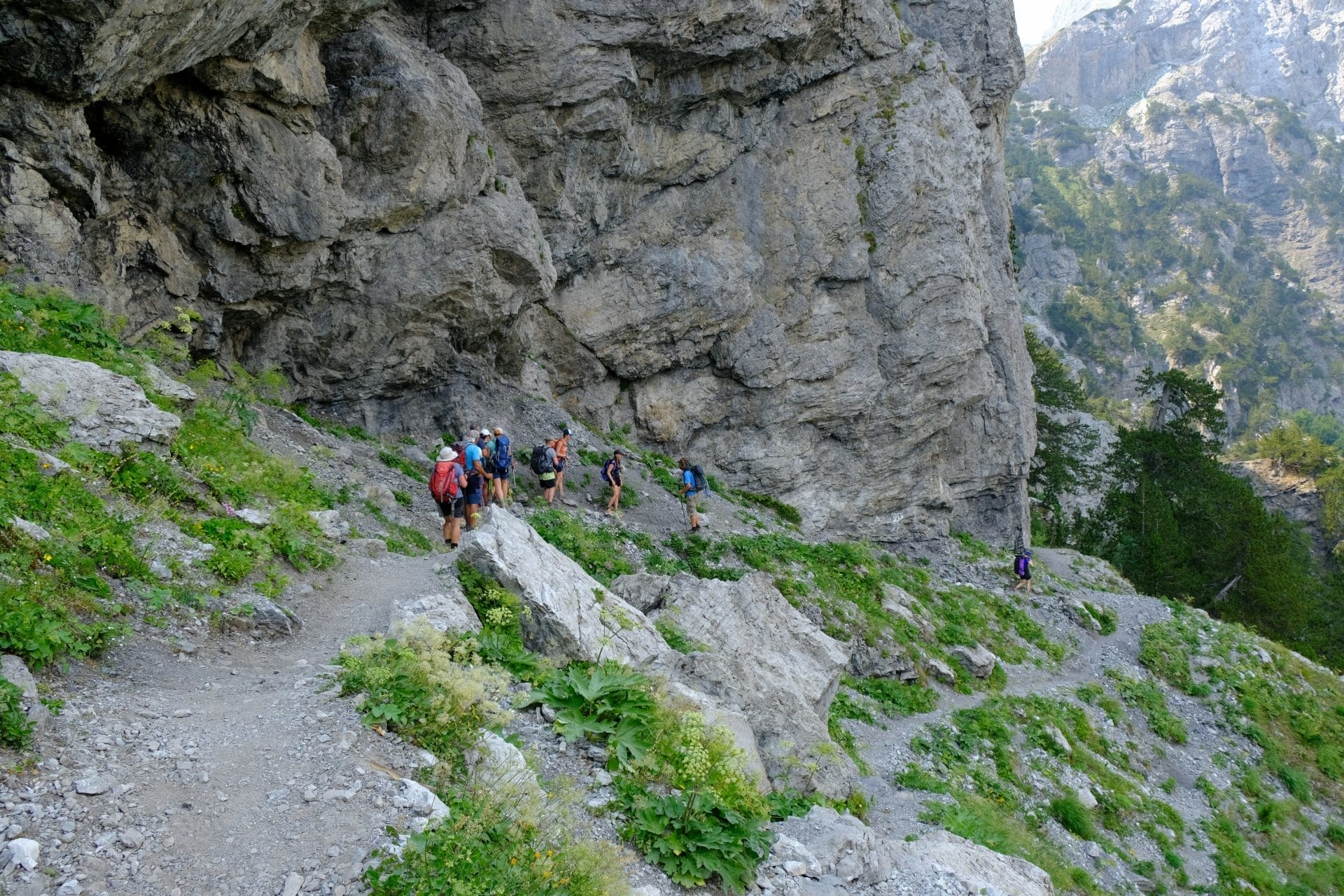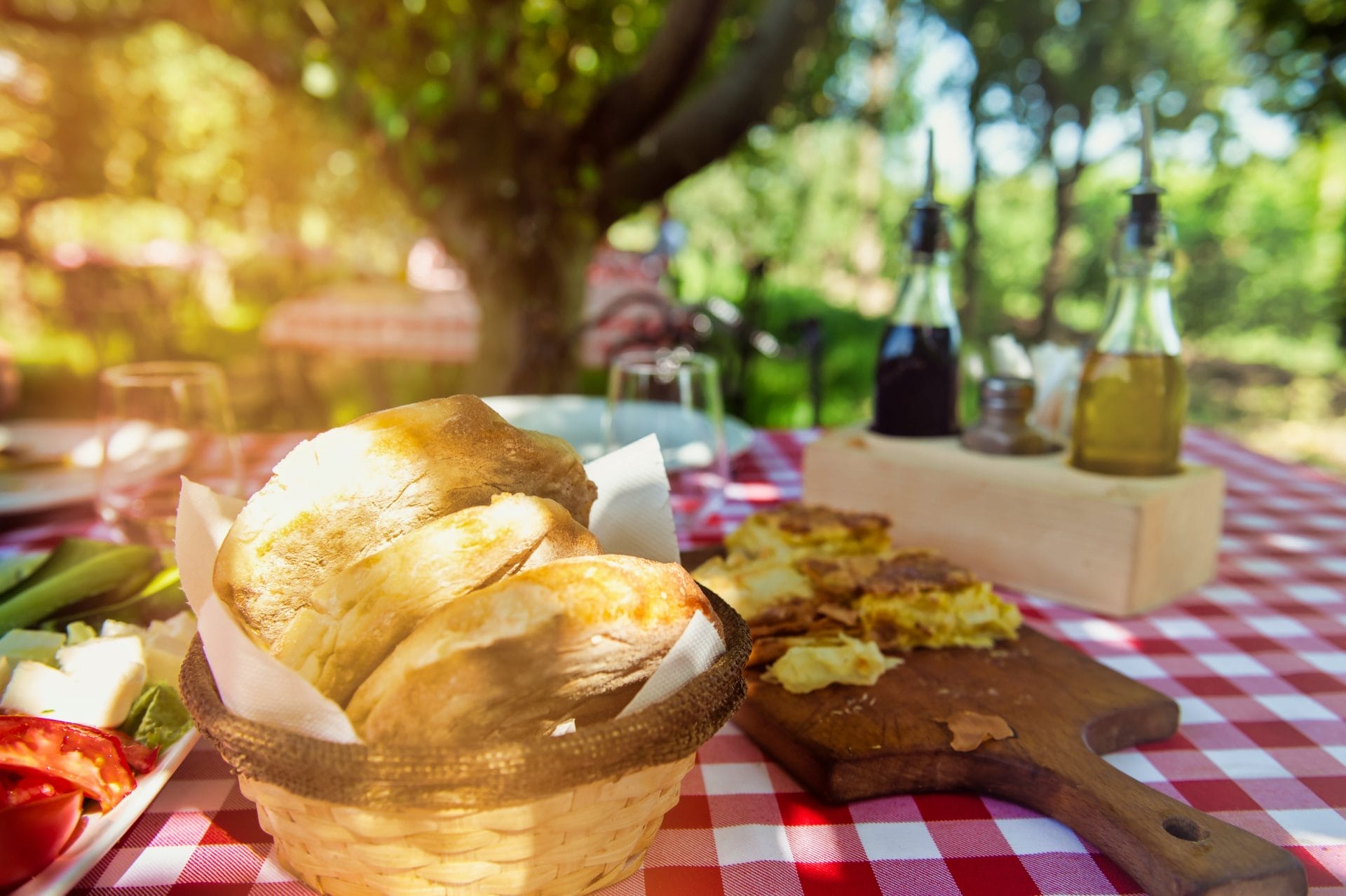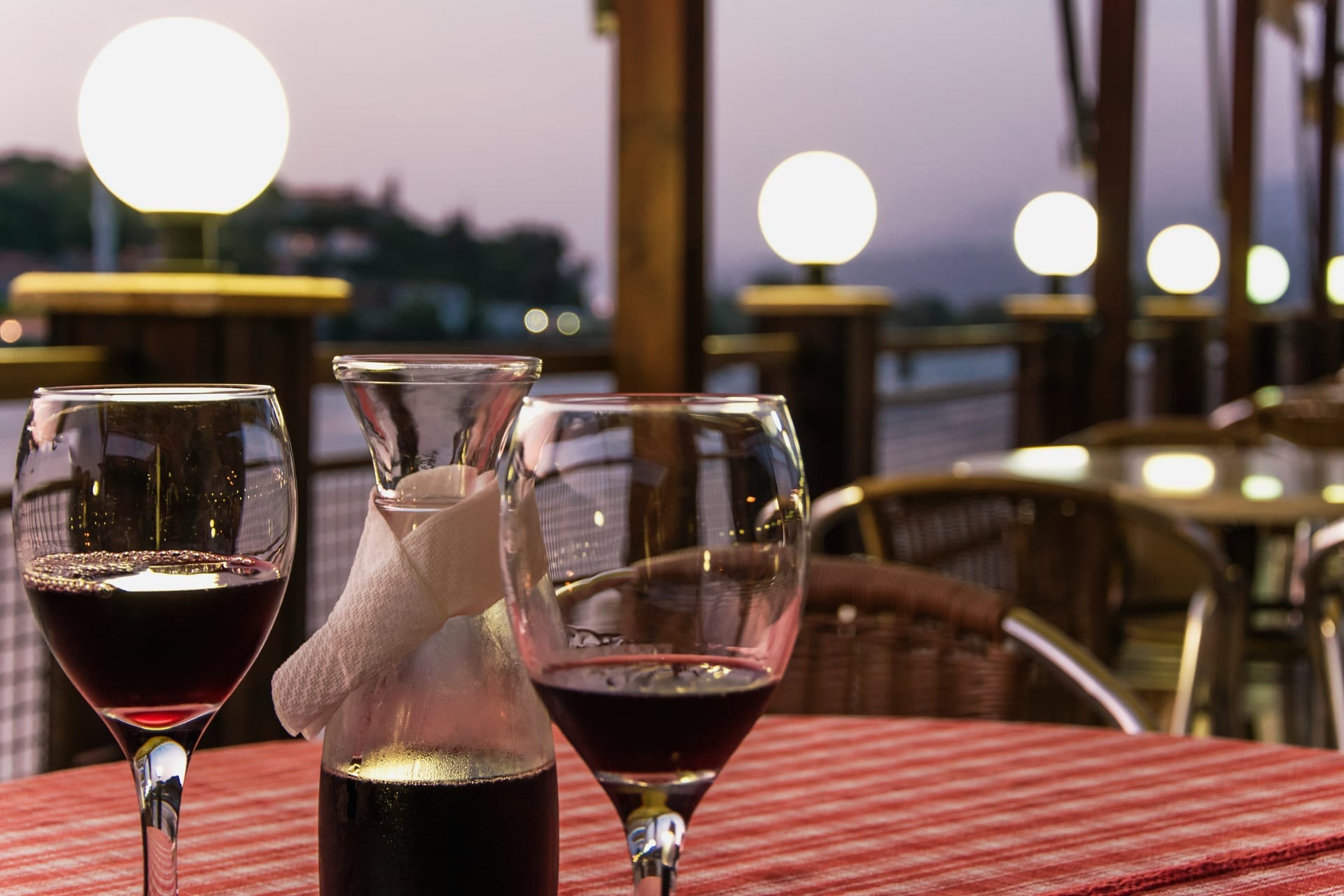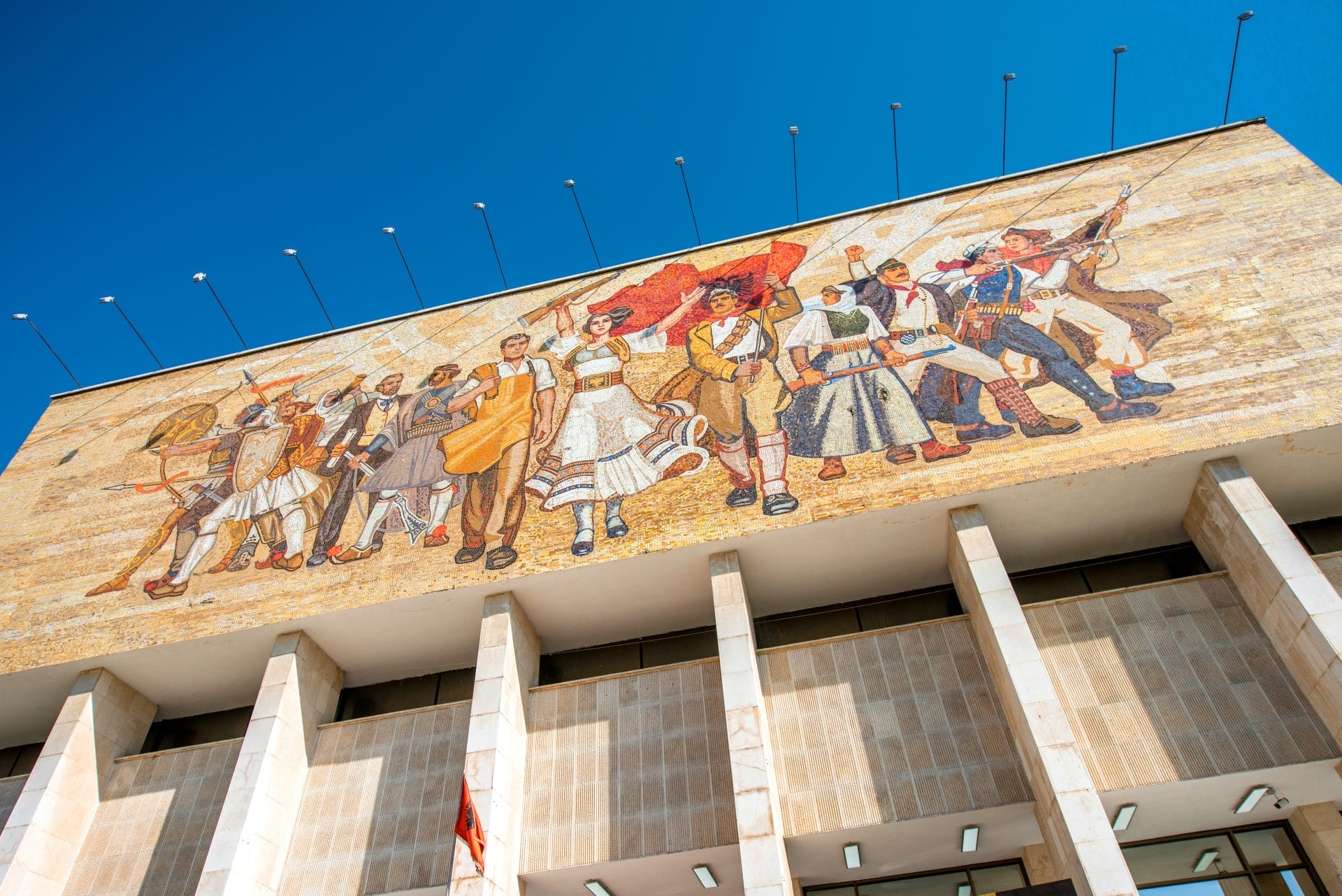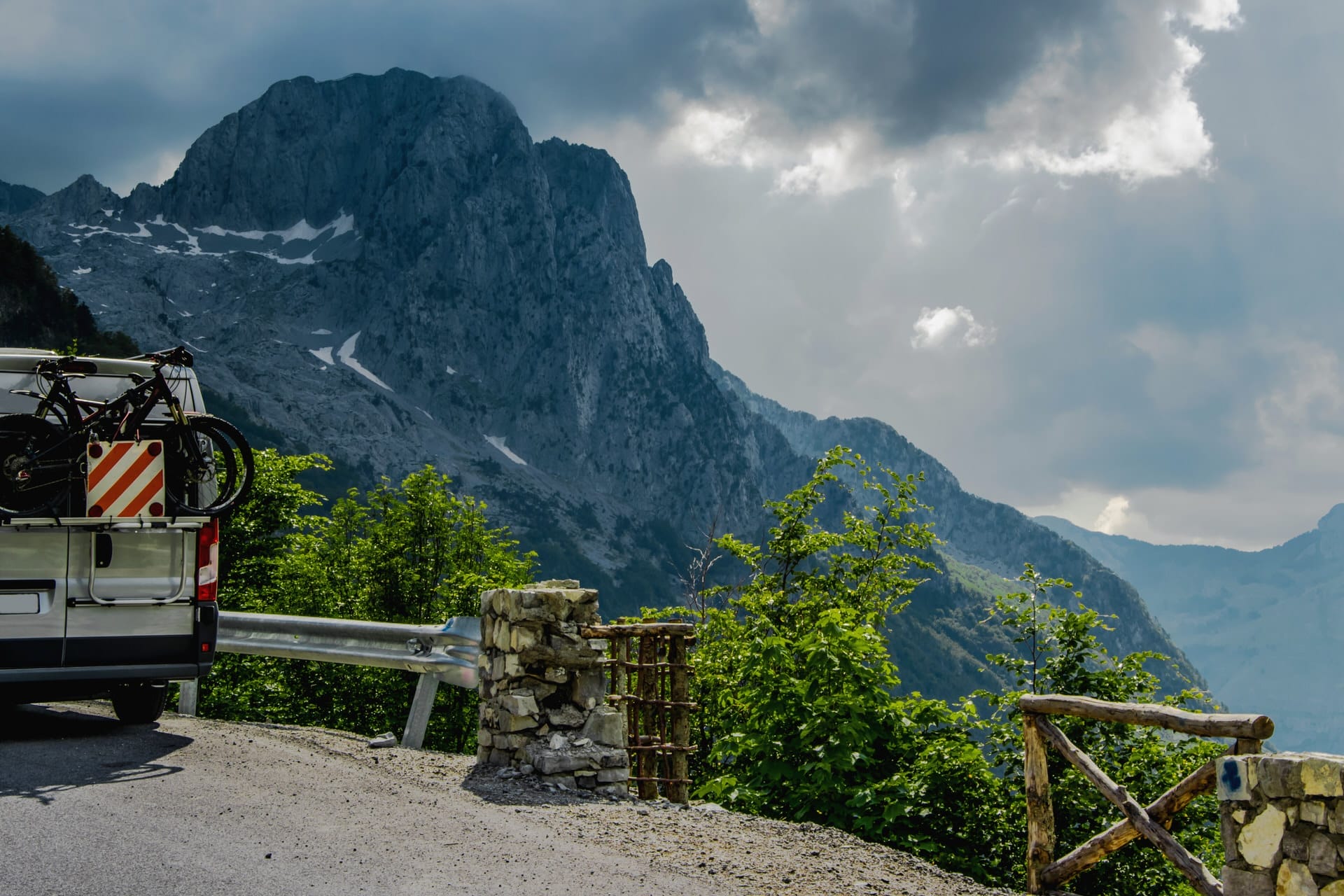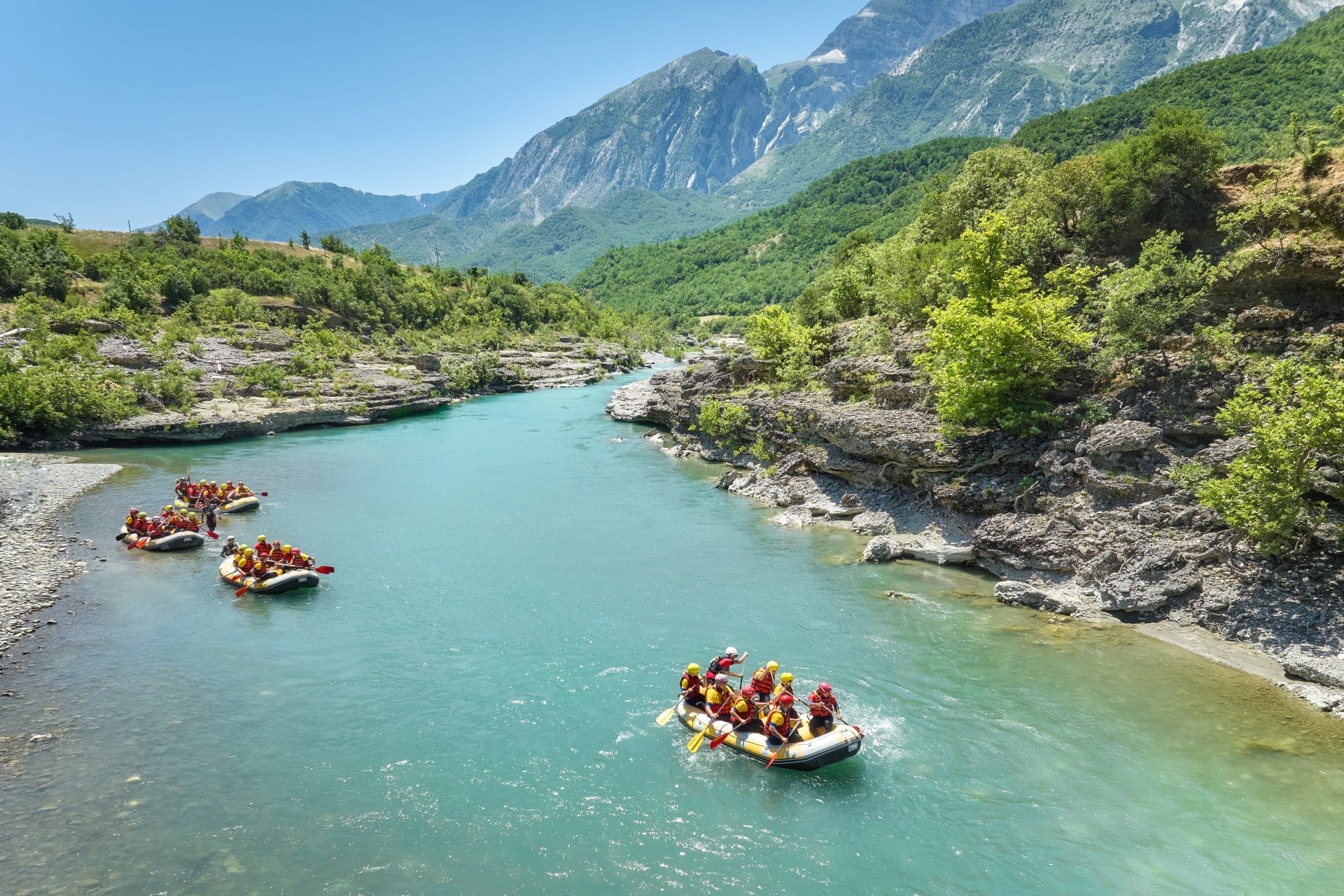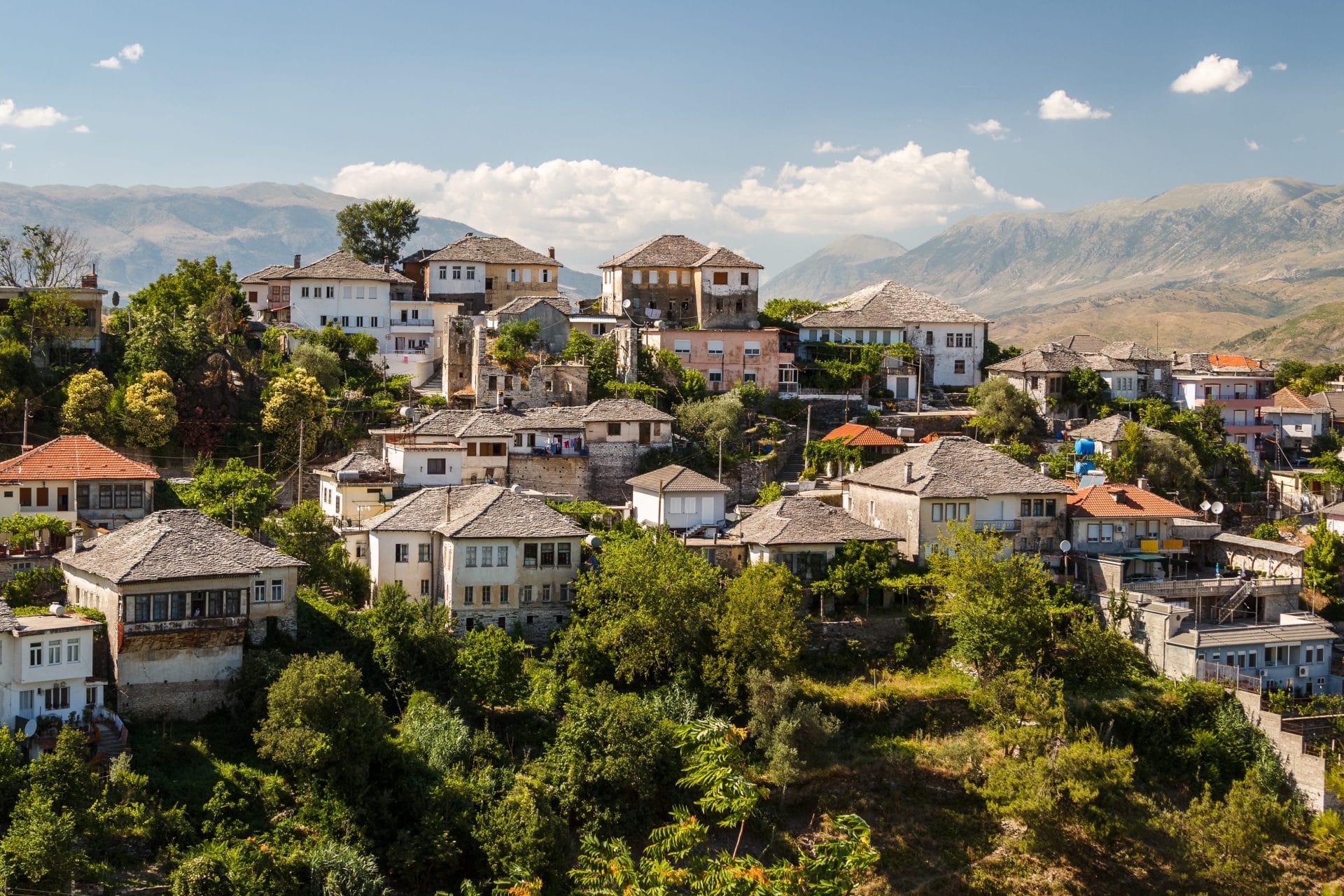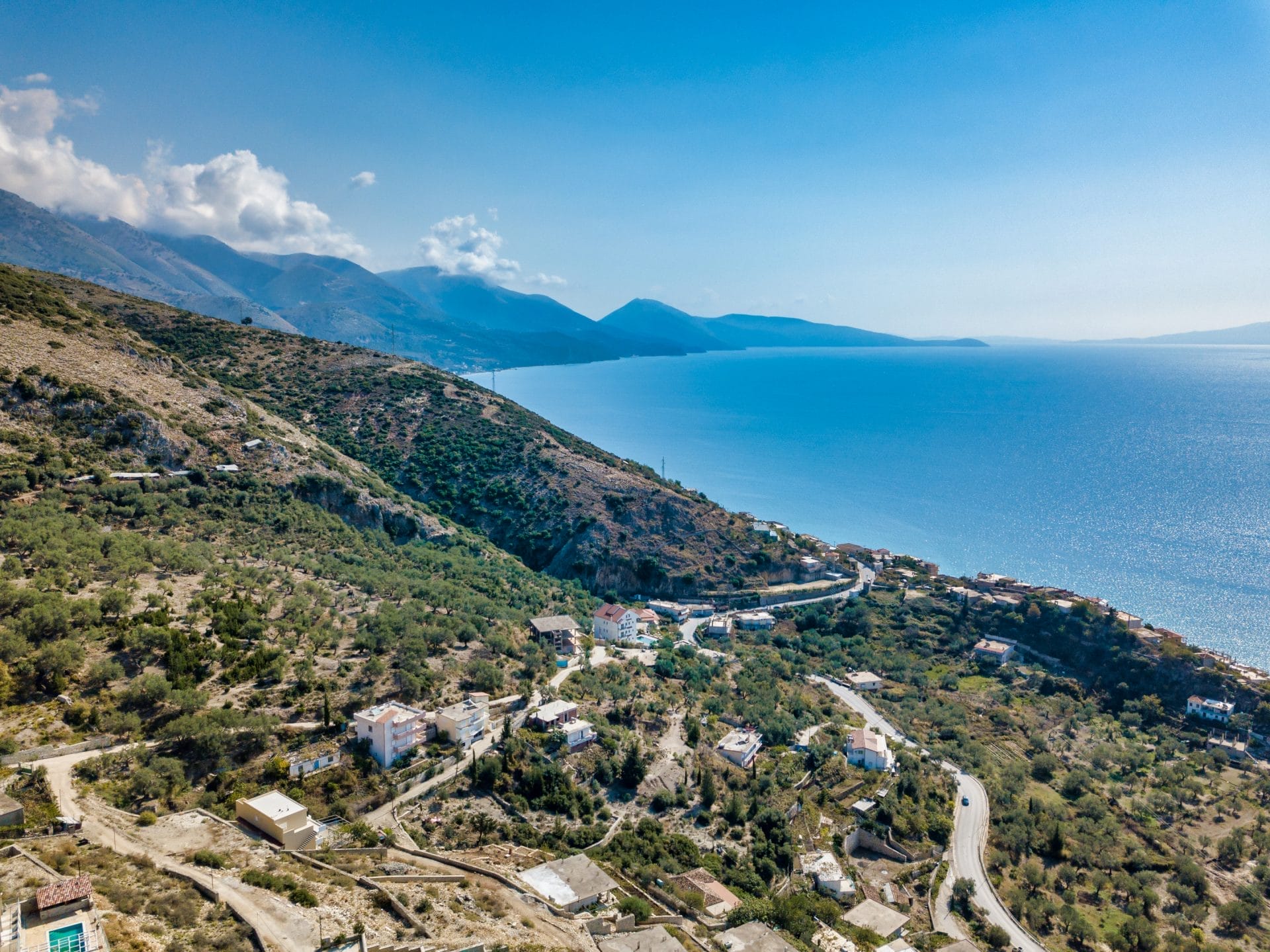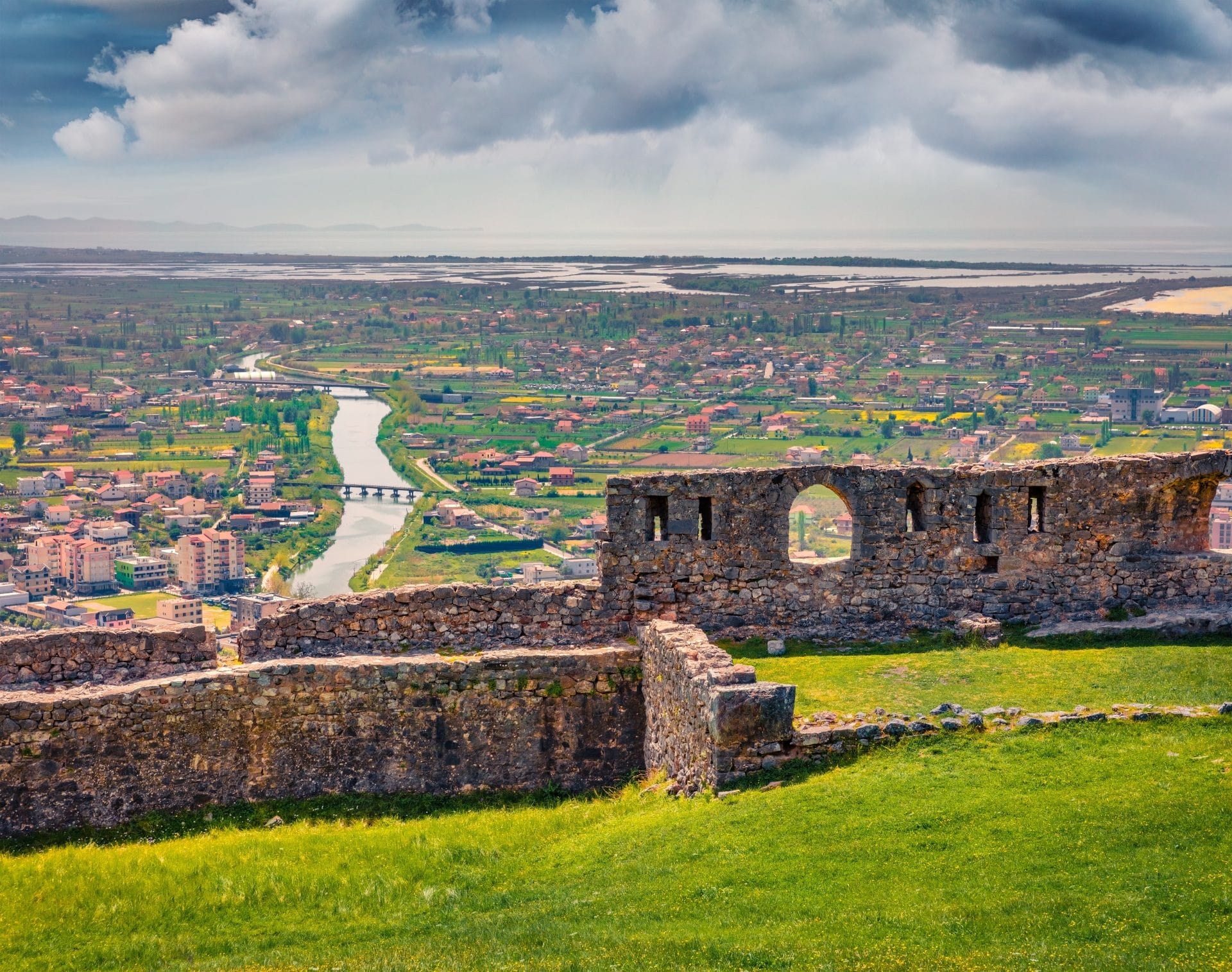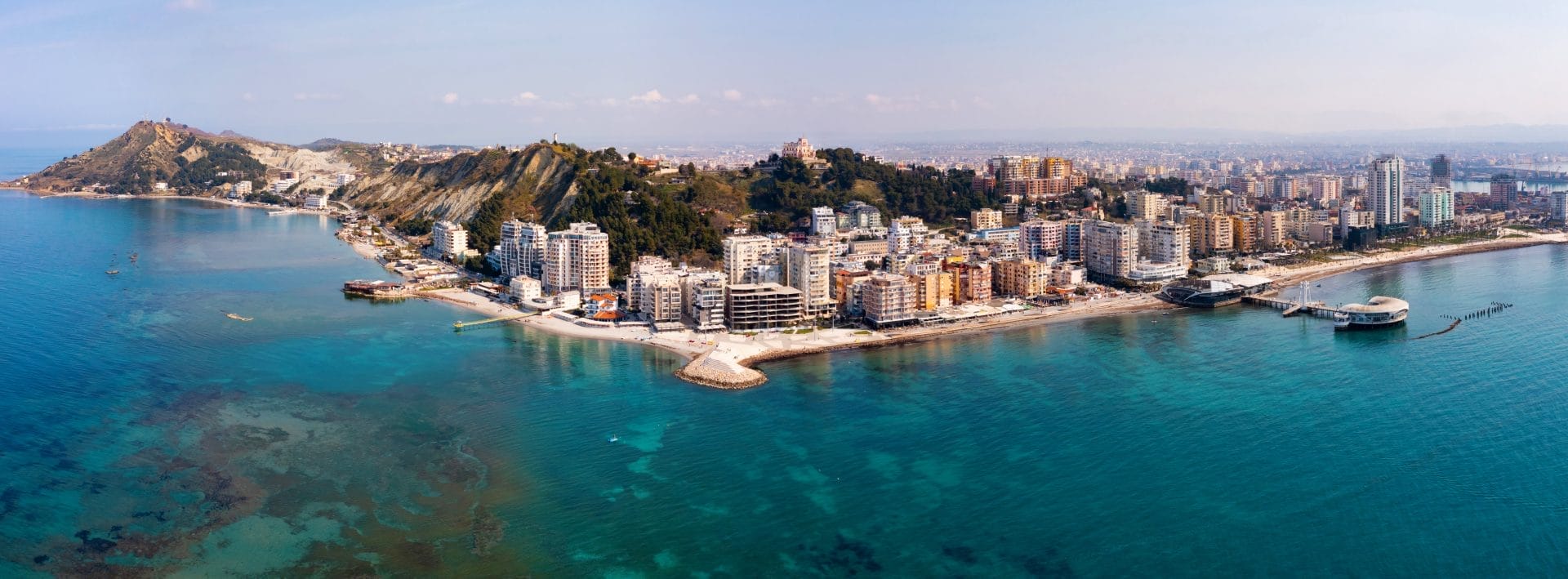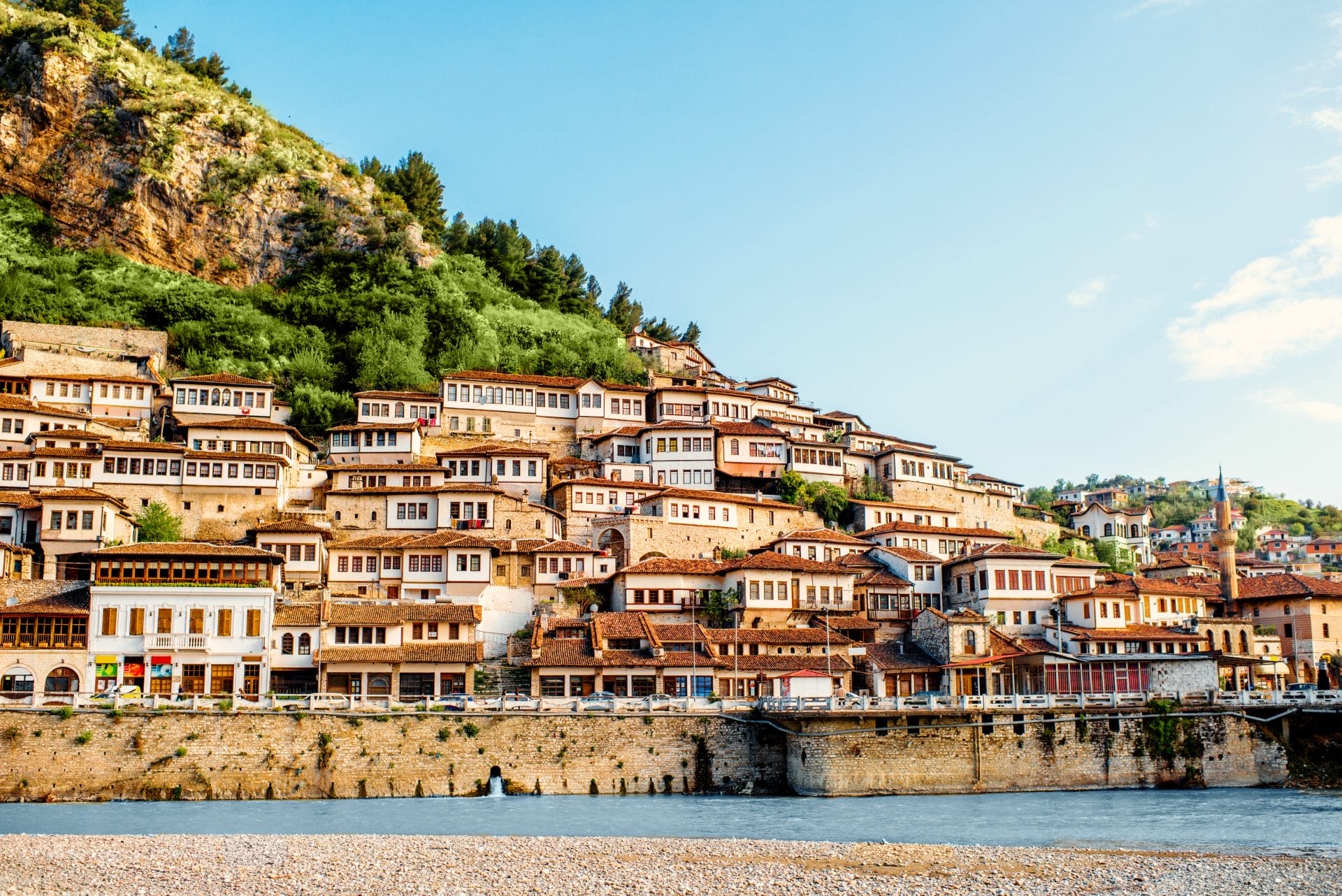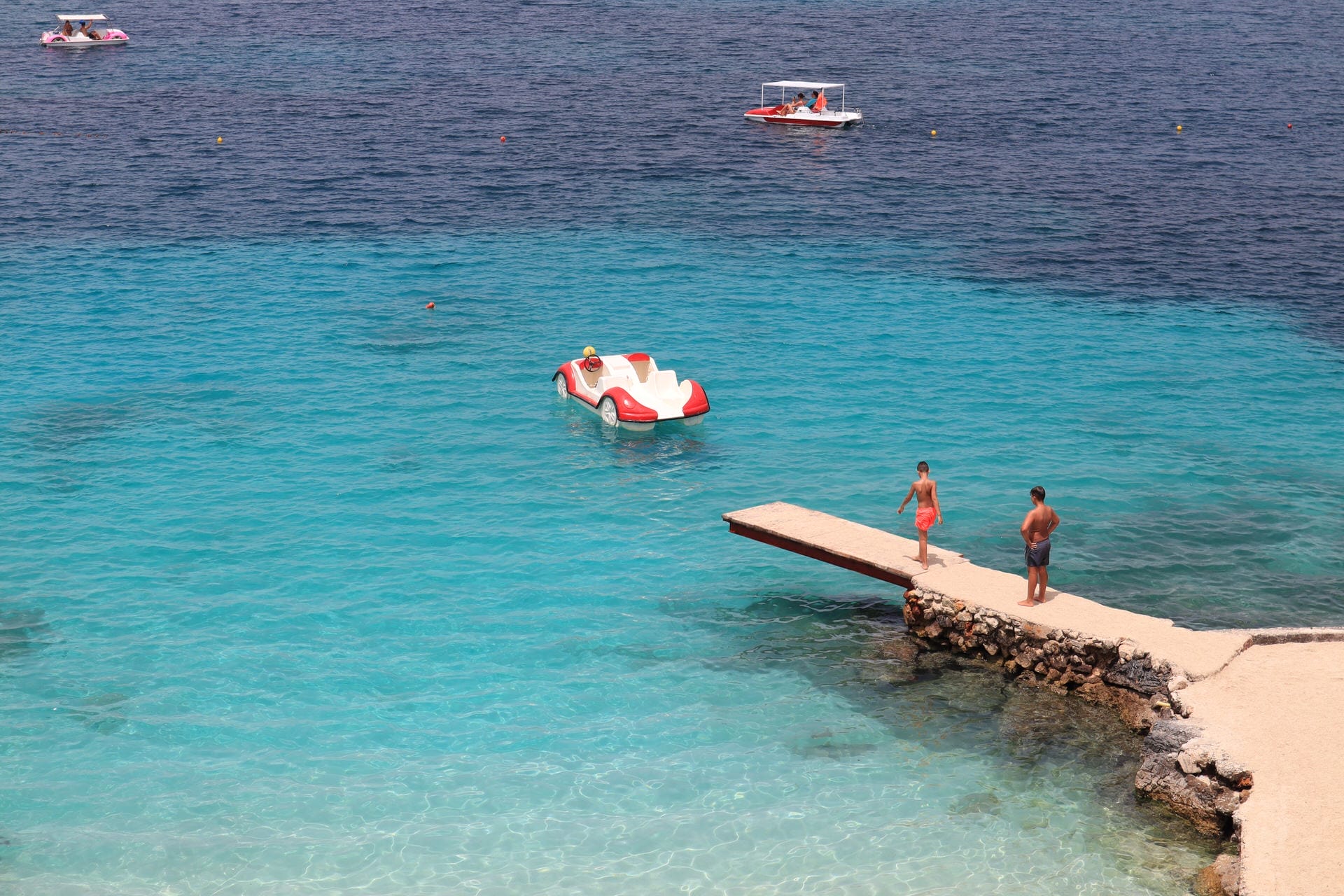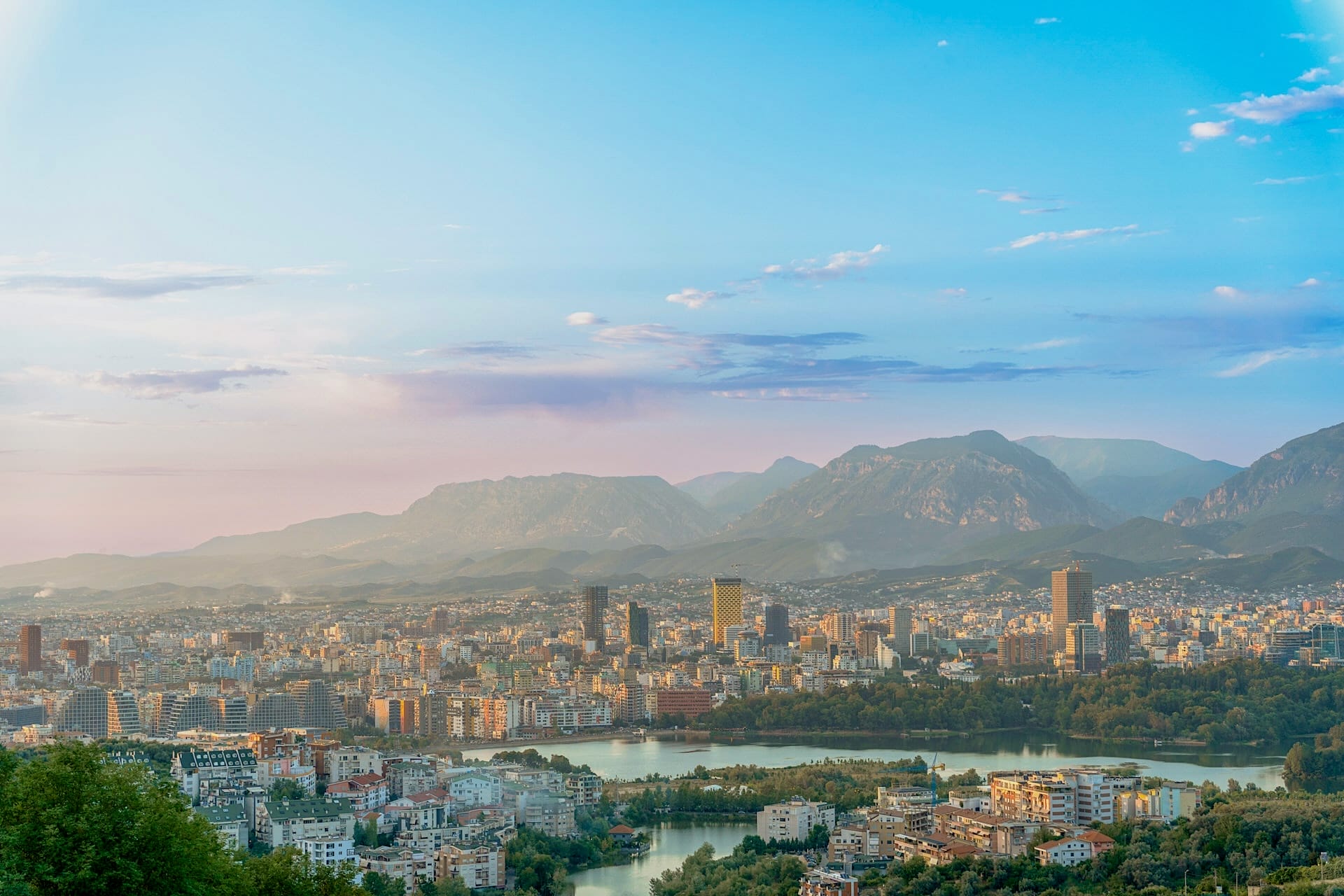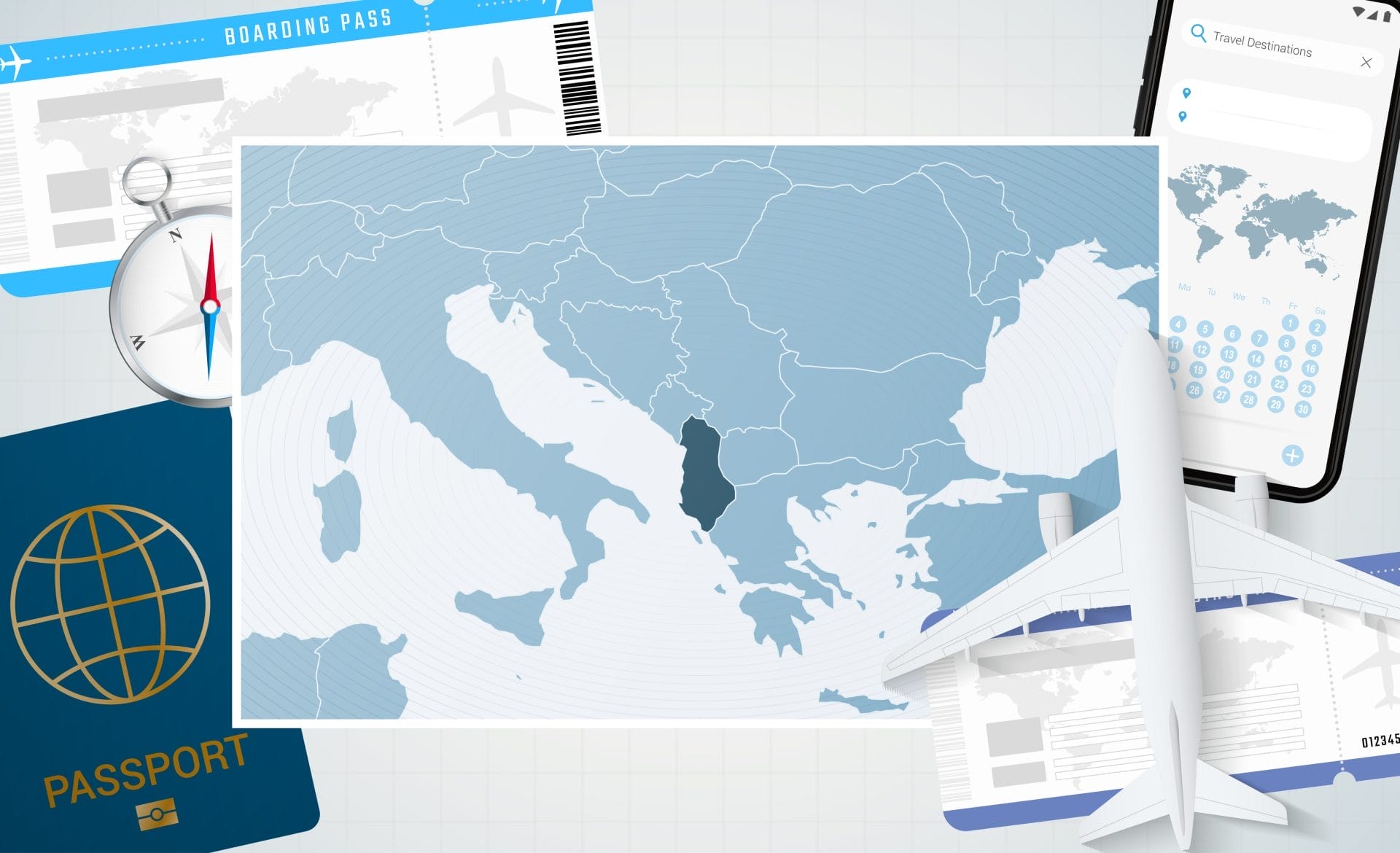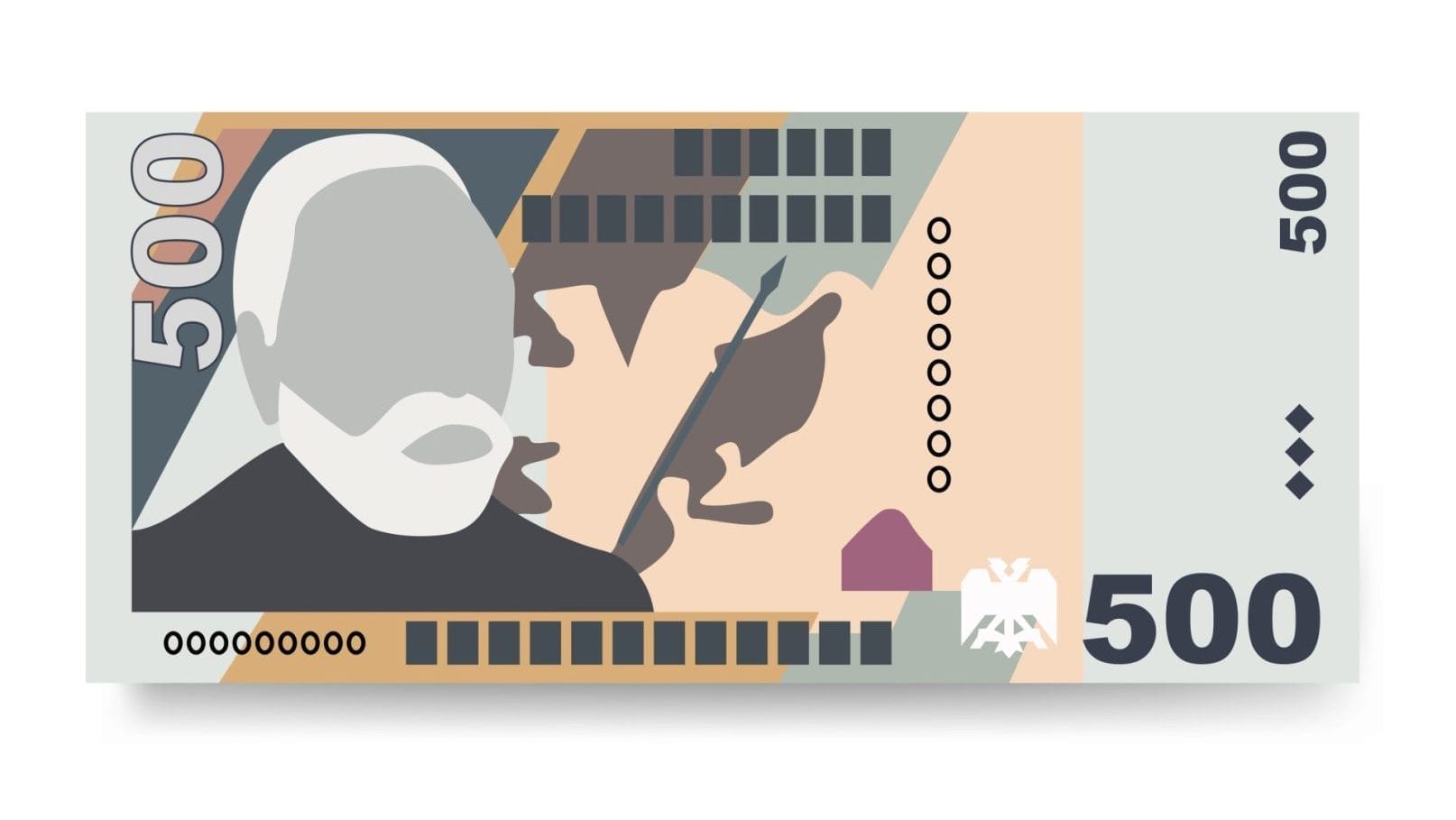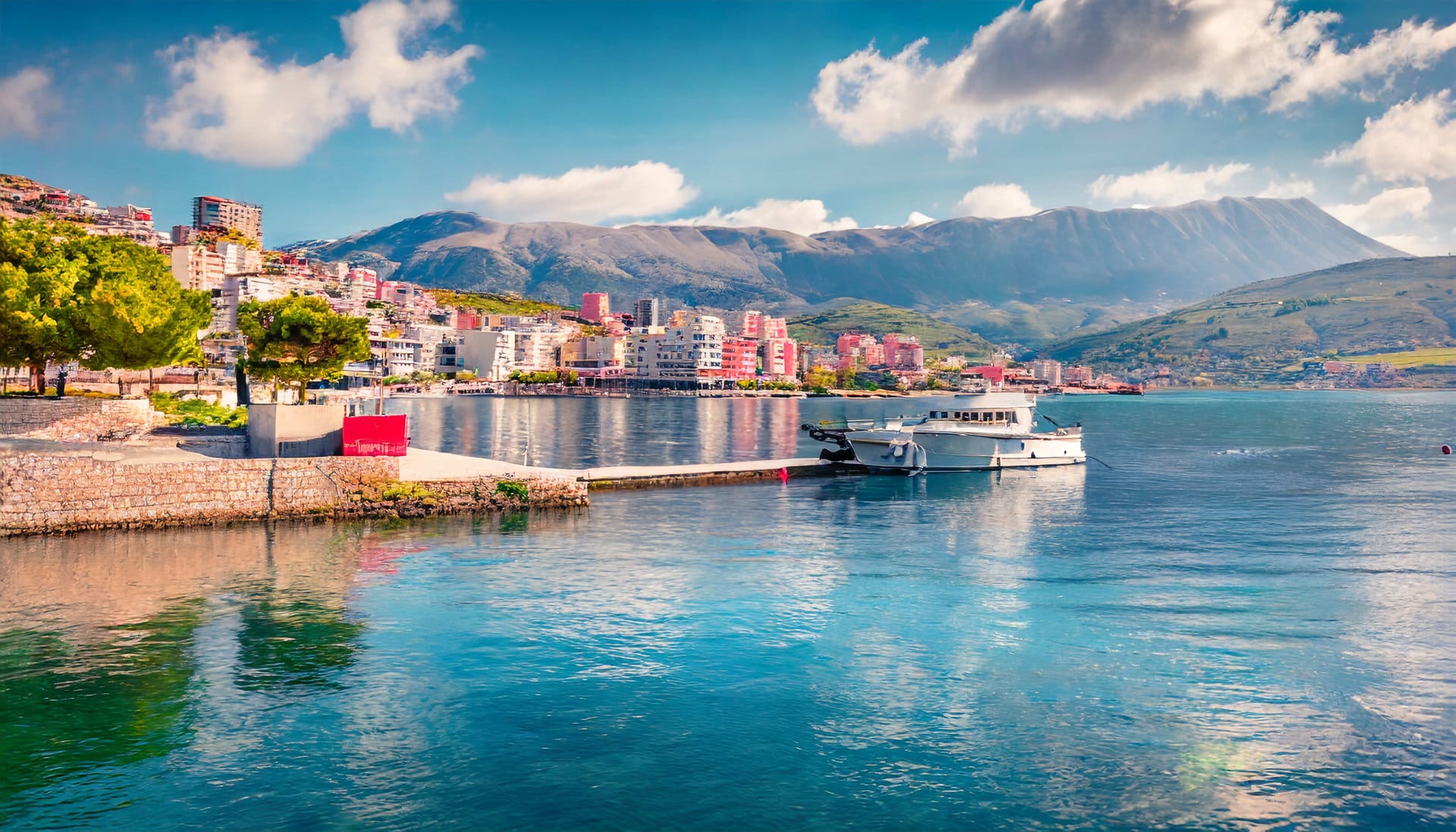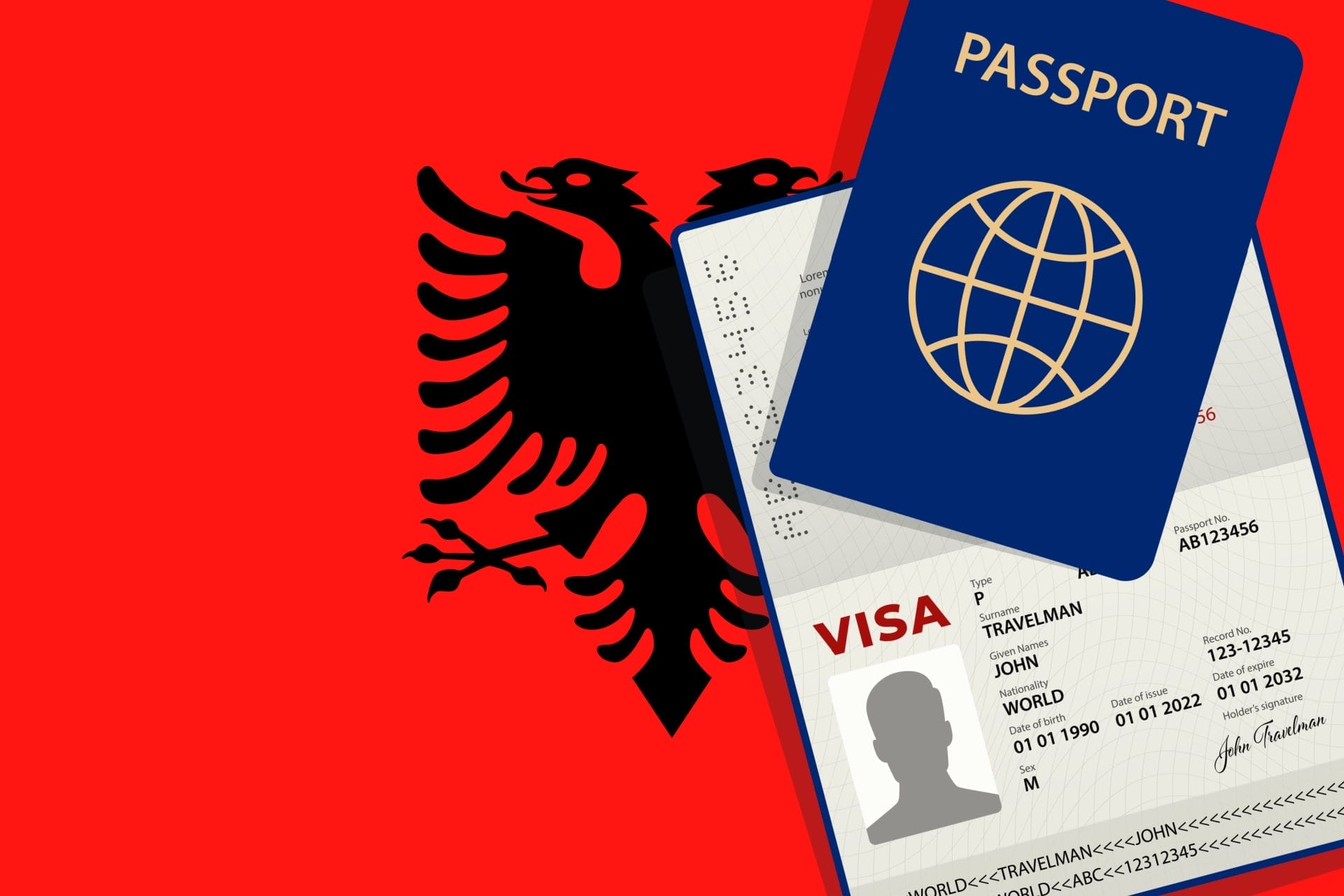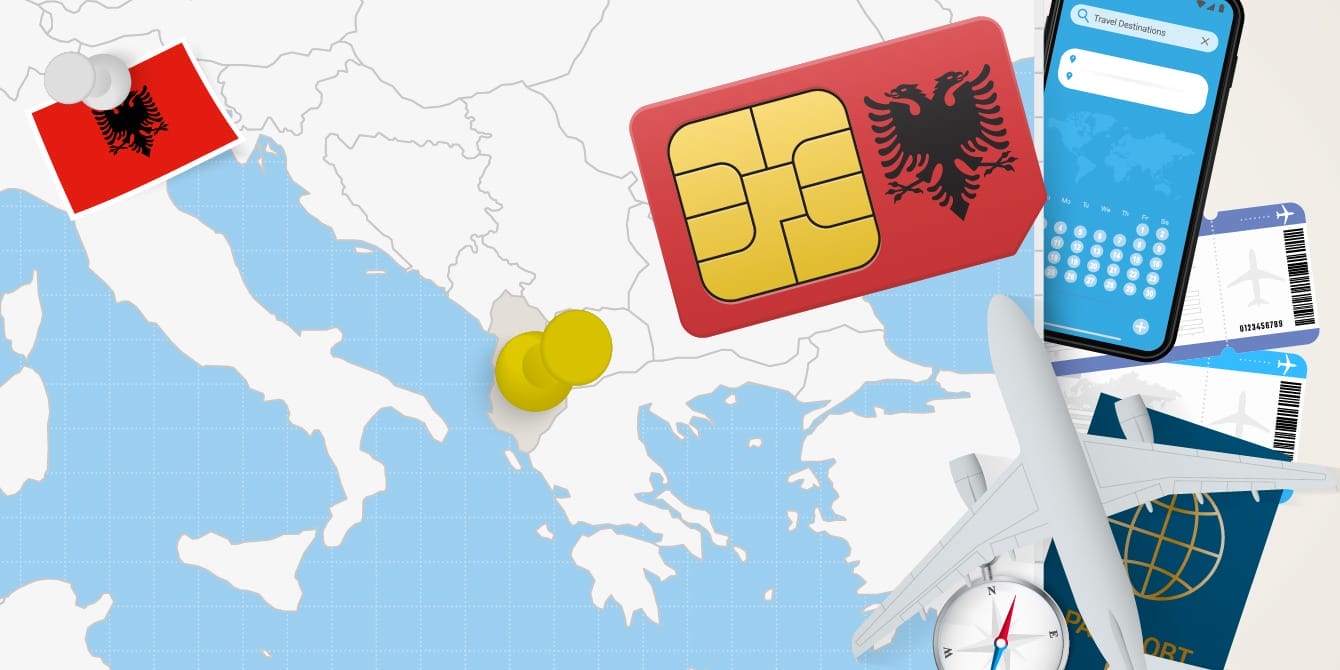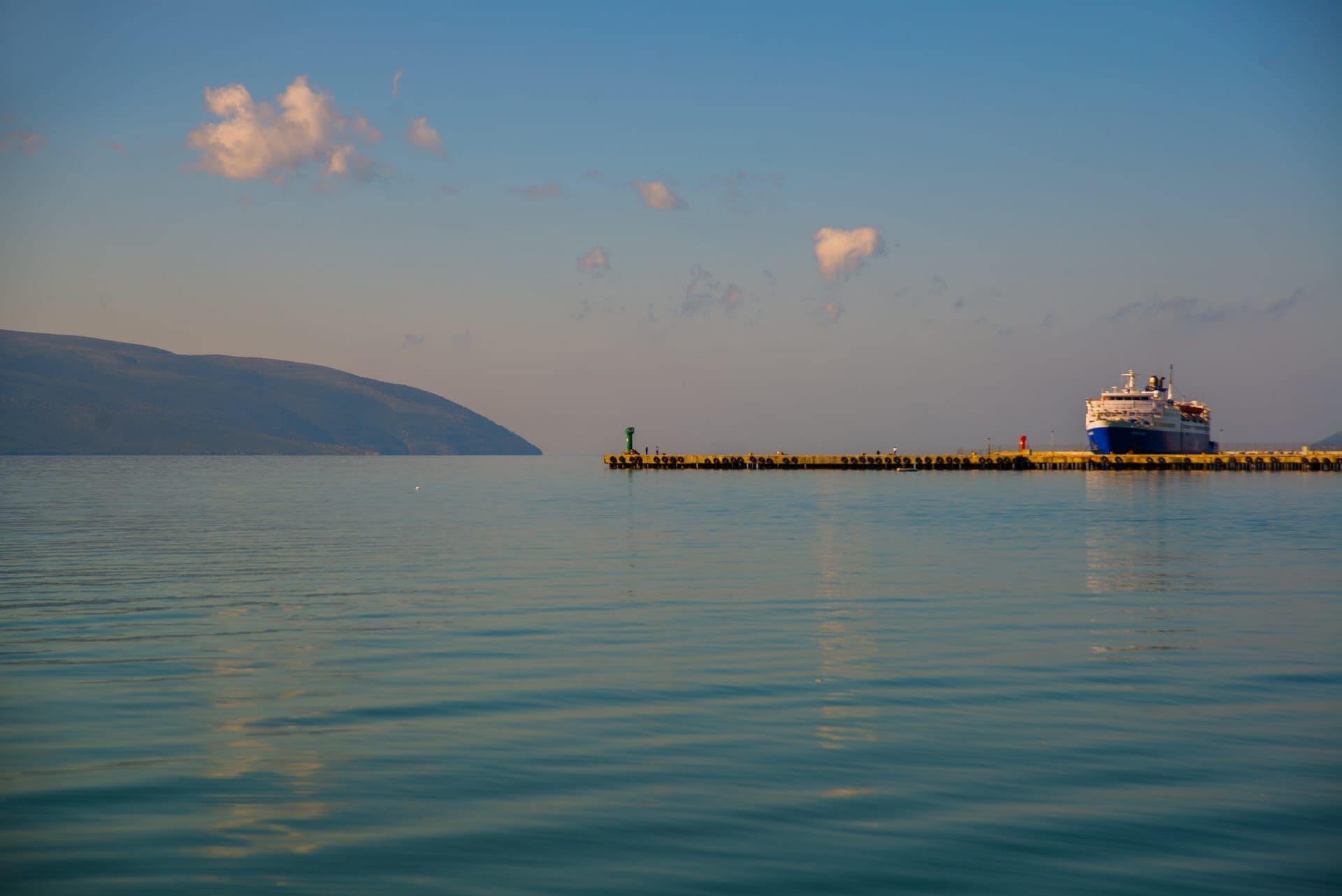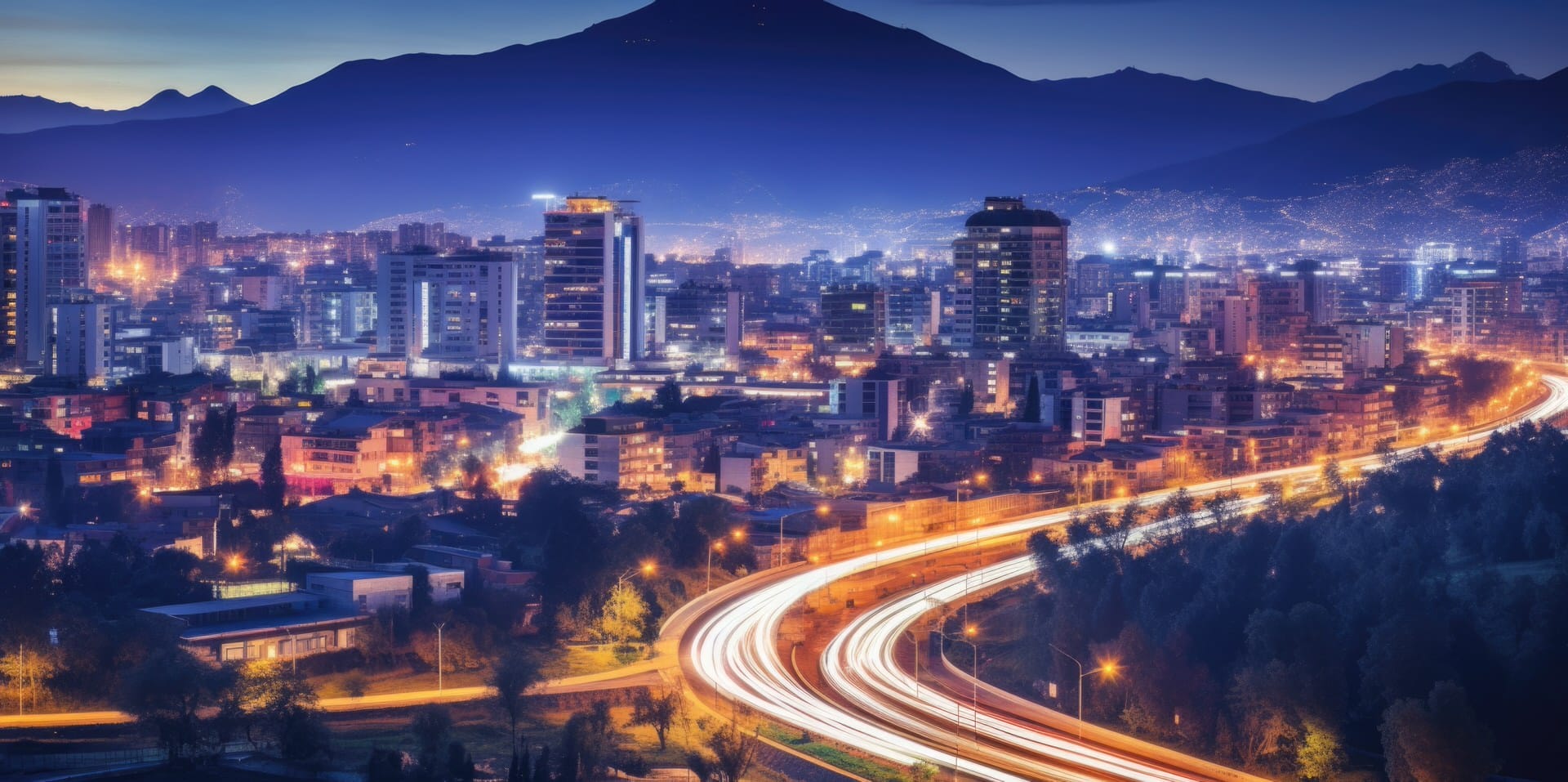
- Why Visit Albania?
- Geography and Regions
- Weather and Climate
- History and Cultural Insights
- People and Society
- Major Cities and Destinations
- Off the Beaten Path Destinations
- Top Outdoor Activities
- Fascinating History and Culture
- Local Cuisine and Drink
- Essential Information for Travellers
- Transportation
- Health and Safety
- Respecting Traditions and Customs
- Planning Your Itinerary
- Experiences Beyond the Beaten Path
- Responsible Travel in Albania
Why Visit Albania?
Escape the crowds and uncover one of Europe’s last undiscovered destinations – the wonders of Albania.
With ancient ruins dotted along stunning coastlines, charming historic towns, jagged soaring mountain peaks, and pristine beaches, Albania promises some of Europe’s most awe-inspiring scenery.
Yet this Balkan jewel remains off the tourist radar, making it an authentic European escape.
Albania rewards explorers with rousing adventures like epic hikes, immersing yourself in local life, or discovering the stunning Albanian Riviera.
With rugged peaks plunging into the azure Adriatic, an endless coastline dotted with ancient ruins, and villages lost in time, Albania promises some of Europe’s most awe-inspiring landscapes.
Yet this Balkan jewel has escaped the tourist radar, making it one of the last authentic getaways on the continent.
Albania rewards explorers with rousing adventures, whether epic hikes in the Accursed Mountains, immersing yourself in local life in historic Berat, or discovering pristine beaches along the Albanian Riviera.
Beyond its spectacular scenery lies a vibrant culture shaped by ancient Illyrians, Greeks, Romans, Venetians, and Ottomans. Each era left indelible imprints through stunning archaeological sites, medieval castles, and Islamic architecture across Albania.
After decades of isolation, Albania now shares its charms with the world. In reinvented towns like Tirana, trendy café culture thrives alongside historic areas radiating old-world grandeur.
Yet the real highlight is the legendary Albanian hospitality. Warmth and generosity to visitors remain unparalleled in Europe.
This guide will help you explore Albania’s spellbinding landscapes, connect with its fascinating culture, and experience its welcoming spirit.
Discover the secrets of one of Europe’s last undiscovered destinations.
Geography and Regions
Albania has a total area of 28,748 square kilometers, slightly larger than Maryland. The country has a predominantly mountainous terrain interspersed with hills, fertile valleys, lakes, rivers, and a 450 km coastline along two seas – the Adriatic to the northwest and the Ionian to the southwest.
You can divide Albania into four main geographical regions, each with its distinct character:
Coastal Albania
The narrow coastal plain lining the turquoise Adriatic and Ionian seas features beautiful beaches, hidden coves, sandy bays, and rugged headlands.
The shoreline around Tirana’s capital has undergone considerable development, while areas further south retain a more secluded atmosphere.
Southern highlights like Saranda and the Albanian Riviera offer a relaxed Mediterranean vibe. Historic port cities like Durres and Vlora illuminate Albania’s rich maritime history.
The abandoned Greco-Roman site of Butrint and Ali Pasha’s castle at Porto Palermo Bay are fascinating coastal sights.
Central Albania
The mountainous spine of Albania consists of the Albanian Alps in the north and the Pindus Mountains in the south. Nestled within the valleys and peaks are lively towns like Elbasan, medieval Kruja perched on a clifftop, and bustling Tirana.
Lush forests, lakes, and national parks like Mount Dajti, Shebenik-Jabllanice, and Lura are ideal for outdoor adventures. Quaint mountain villages offer glimpses into Albania’s past while modern highways connect urban centers.
Northern Albania
Northern Albania contains the magnificent Albanian Alps, also called the Accursed Mountains. Snow-capped peaks, secluded valleys, primeval forests, and historic towns like Shkodra and Koman punctuate this scenic region.
Outdoor enthusiasts flock to trekking bases like Valbona, Theth, and Razem. The stunning Koman Lake Ferry provides breathtaking vistas of gorges and mountains. Sites like Rozafa Castle and Orosh Castle exude eerie allure.
Southern Albania
The southern part of Albania features striking contrasts – the arid Butrint plain lined with azure waters, the Drino River valley’s fields and orchards, and the dramatic Pindus peaks.
The lake regions near Macedonia and Greece boast atmospheric towns and monasteries.
Youthful Saranda serves as the gateway to the UNESCO sites of Butrint and Gjirokastra. Quaint mountain villages, thermal springs, and the UNESCO-listed villages of Muzina and Labove e Kryqit offer authentic glimpses of rural life.
Weather and Climate
Albania enjoys a predominantly Mediterranean climate along the coast, while the interior highlands experience more continental conditions.
However, the country’s diverse topography results in significant local variations.
Coastal Areas
The coastal regions have hot, dry summers and mild, rainy winters. Daytime summer temperatures average 24°C while nighttime lows are around 16°C.
Winters average around 10°C during the day and 5°C at night. Sea temperatures reach 21-24°C in summer.
The Albanian Riviera receives around 1500 hours of sunshine annually. Humidity is moderate and rainfall averages 1000 mm per year, with December being the wettest month.
Inland and Highlands
Inland areas and the Albanian Alps have a more continental climate, with colder winters and greater temperature fluctuations.
The summer daytime average is 27°C but can reach 35°C—winters average 0°C during the day but drop below -10°C at night. Snowfall is common above 1500 m elevation between December and March.
The highlands receive around 2000 mm of precipitation annually.
Best Time to Visit
- Spring (mid-March to May) for pleasant weather, wildflowers, and fewer crowds.
- Summer (June to early September) for beach weather, but prepare for peak crowds in resort areas.
- Autumn (late September to mid-November) for ideal hiking, pleasant temperatures, and beautiful fall colors.
- Winter (December to mid-March) can be rainy in the lowlands and snowy in the mountains, but Christmas vibes and skiing opportunities abound.
History and Cultural Insights
Albania’s strategic location has subjected it to countless occupations and invasions throughout history, creating a richly layered cultural mosaic.
Getting acquainted with the country’s complex past provides insight into its traditions and national psyche.
Early Inhabitants
Humans first inhabited Albania over a quarter of a million years ago, as evidenced by stone tools found at Xarra.
By 1000 BC, Indo-European tribes such as the Illyrians, a warlike people inhabiting present-day Albania and Kosovo dominated the region. They built hill forts and traded with Greek colonies on the coast.
The territory was conquered in the 4th century BC by Alexander the Great. After the Roman Empire took control in 165 BC, Albania was incorporated into provinces of Illyricum, Macedonia and Epirus. Christianity began spreading by the 2nd century AD.
The decline of the Roman Empire in the 4th century AD allowed the Byzantine Empire to control most of Albania by the end of the century.
Invasions by Goths and Huns followed, causing chaos and destruction. The Bulgarians took control of inland regions in the 9th century before the Byzantines regained power.
Middle Ages
The medieval era was marked by conflicts between local Albanian chieftains and the Byzantine Empire. Albanians are believed to be descendants of ancient Balkan peoples such as the Illyrians, Dacians, Thracians and Greeks.
After the Fourth Crusade sacked Constantinople in 1204, much of Albania came under the control of the Kingdom of Sicily until the late 13th century when the Byzantine Empire briefly retook the area.
The 14th century saw the rise of Albanian principalities that fought off successive threats – from the Serbian Empire to the Ottoman Turks who began invading Albanian lands from 1385 onwards.
Resistance against the Ottomans was spearheaded by the national hero Scanderbeg who repeatedly defeated the invaders until his death in 1468, after which most of Albania came under Ottoman control. The Ottomans erected mosques, bridges and castles that still stand today.
From Independence to Communism
Albanians won independence from the crumbling Ottoman Empire in November 1912, but it was short-lived. The First World War saw the country split between Italy, France, Greece, Serbia and Montenegro.
Ahmet Zogu crowned himself King Zog in 1928 but fled when Italy invaded Albania in 1939 until his death in 1961. The Axis powers occupied Albania during World War II until the communist Party of Labour took control in 1944.
Enver Hoxha emerged as the Stalinist dictator of Albania in 1944, turning the country into the most isolated and repressive communist state in Europe. More than 100,000 Albanians were imprisoned or exiled during his rule until his death in 1985.
Transition to Democracy
The communist regime finally collapsed in 1991. Multi-party elections were held in 1992 amid economic collapse and social disorder. Unregulated investment schemes in 1997 led to an armed rebellion and violence, requiring UN intervention to restore order.
But the 21st century brought political and economic stability to Albania. It joined NATO in 2009 and received EU candidate status in 2014. While remnants of its communist past are still visible, Albania today is a lively democratic state welcoming visitors to its ancient landscapes and dynamic culture.
People and Society
With a population of 2.8 million, Albania is one of the least densely populated countries in Europe. Comprehending the traditions, etiquette and quirks of Albanian society will enrich your travel experience.
Religious Composition
- Islam: Sunni Muslims constitute about 65% of Albania’s population, making it one of only two Muslim-majority nations in Europe. Most Muslims live in central and southern regions.
- Christianity: About 20% of Albanians identify as Christian, with Orthodox believers concentrated in southern areas and Catholics in the north.
- Atheism: Communism’s anti-religious policies created a still-sizable atheist segment around 15% of the population.
- Other: The remaining 5% consists of small Bektashi Muslim and Protestant Christian communities.
Cultural Values
- Hospitality: Welcoming guests and strangers is central to Albanian identity. Expect to be invited in for a drink or meal!
- Honor: Having personal honor and dignity is prized in Albanian culture. Elders are respected.Saving face in public is important.
- Besa: Keeping one’s word to ensure peace and trust is paramount. Oaths of friendship create unbreakable bonds.
- Gender Roles: Traditional patriarchal families are common, though urbanization is changing attitudes.
Cuisine
Food plays a central role in Albanian culture. Culinary influences from Greeks, Italians and Ottomans have evolved into a rich native cuisine.
- Olives, fruits, vegetables, yogurt, cheese and cornmeal feature prominently.
- Grilled meat, stews, breads, pies and cheeses are everyday staples.
- Signature dishes include fërgesë (baked peppers), qofte (spiced meatballs), pite (phyllo dough pies) and byrek (savoury pastries).
- Sweets like baklava, petulla doughnuts and kadaif are scrumptious indulgences.
Customs and Etiquette
- Greetings involve handshakes and cheek kissing between friends. Use titles when addressing older people.
- Gift giving is customary – sweets, flowers or souvenirs from home make good gifts.
- Dress conservatively, especially at religious sites. Swimwear is for beaches only.
- Positive responses include shaking your head vertically and the ‘OK’ gesture (thumb and forefinger joined).
- Avoid provocative political discussions and photographing military sites.
- Tipping isn’t expected but leaving 10% at restaurants is appreciated.
Major Cities and Destinations
From bustling capitals to seaside resort towns and historic fortresses, Albania offers diverse urban experiences. Here are some of the highlights.
Lively Capital Tirana
Tirana provides an invigorating introduction to contemporary Albania with its exuberant mix of garish communist vestiges, Ottoman relics and trendy cafés. Sights not to miss include:
- Skanderbeg Square: A vast public space ringed by government buildings including the National Museum with historic and artistic artifacts.
- Et’hem Bey Mosque: Graceful 18th century mosque with a frescoed interior. Non-Muslims can visit outside prayer times.
- Bunk’Art Museum: Housed in a massive Cold War bunker, this fascinating museum reveals Albania’s paranoid past through photographs, propaganda art and exhibits.
- Dajti Express: Take the Dajti Express cable car for sublime views of Tirana cradled amid the peaks of Mt. Dajtit. Hiking trails abound on the mountain.
- Blloku District: Tirana’s chic quarter has trendy bars, shops and clubs on tree-lined streets where communist bigwigs once lived.
Historic Berat
Berat’s grand Ottoman-era mansions cascading down lush hillsides earned it the moniker ‘town of a thousand windows’. Its highlights include:
- Defensive walls have encircled the hilltop Kalaja Fortress since the 4th century AD. The residential quarter within boasts Byzantine churches and ruins of a 13th-century mosque.
- Onufri Museum’s 16th-century Holy Trinity Church houses masterpieces of renowned Albanian icon painter Onufri.
- Gorica Bridge spanning the Osumi River, still inhabited by pre-WW2 merchant families.
- The Ethnographic Museum’s 18th century building showcases traditional Albanian lifestyles.
- Mangalem Quarter’s narrow cobbled lanes and historic mosques like the Lead Mosque and the Bachelor’s Mosque.
Bustling Durrës
Founded in 627 BC as Epidamnos, Durrës is one of Albania’s oldest cities. Walking its ancient streets and ruins transports you back to its Hellenistic, Roman, and Venetian days when it was an epic maritime hub. Top sights include:
- The mammoth Roman Amphitheatre dates to the 2nd century AD, which once seated over 20,000 spectators. Gladiator fights entertained crowds here until the 5th century.
- The Archaeological Museum displays a trove of ancient artifacts from when Durrës was a thriving Greek and Roman colony.
- Venetian Torra Tower provides panoramic vistas of the port city from its hilltop perch.
- Exhilarating beaches on Durrës’s outskirts, beloved for water sports.
Historic Krujë
Dramatically perched on a cliff, the fortified town of Krujë was the seat of Albania’s 15th-century national hero Skanderbeg, who defended it successfully against the Ottomans. Significant sites include:
- Krujë Castle, Albania’s main attraction, housing the Skanderbeg Museum in his former quarters filled with armor and memorabilia.
- Ethnographic Museum in an affluent 17th-century Ottoman house depicting local lifestyles.
- Exquisite Ottoman Dollma Teqe mosque was named for the grape vines covering its façade.
- Striking views of the Adriatic Sea and Mount Kruja from the castle ramparts.
- Old Bazaar selling handcrafts among castle walls lined with souvenir shops and cafes.
Beach Paradise Sarandë
A top resort town, Sarandë entices visitors with its Mediterranean vibe, sparkling waters, ancient sites, and lively nightlife. Major draws:
- Butrint National Park: A UNESCO World Heritage Site with ruins from Greek, Roman, Byzantine and Venetian times, set in a pristine wetland.
- Blue Eye Spring: A gorgeous natural pool with azure waters bubbling from an icy underground spring.
- Lekursi Castle: A 15th-century fortress overlooking Sarandë and Corfu Island.
- Pristine Beaches: Ksamil’s islands offer secluded sands, while the buzzing main beach has watersports.
- Nightlife: Sip cocktails on the promenade’s terraces or dance the night away at beachfront bars like Havana Beach.
Off the Beaten Path Destinations
Beyond Albania’s historic hubs lie hidden gems perfectly suited for slow travel. Here are some charming towns and natural escapes waiting to be discovered.
Theth and the Accursed Mountains
Nestled deep in the magnificent Albanian Alps, the isolated mountain village of Theth entrances visitors with stone guesthouses, local cuisine, and stunning wilderness vistas. Hike through virgin forests and gorges to scenic spots like the Grunasi Waterfall.
Other gems in the Alps include the Guesthouse Roshkolli compound’s 19th-century buildings, the abandoned village of Boga with oak forests and plowed fields, and Restelica’s panoramic valley viewpoint.
Gjirokastër’s Magical Stone City
Defined by its lunar landscape of fortress towers, angled roofs, and pale stone houses, the gorgeous hillside town of Gjirokastër offers an atmospheric retreat into Albania’s past.
Explore the imposing citadel before losing yourself in the Ottoman-era Old Bazaar nearby. Don’t miss Zekate House Museum’s glimpse into traditional 19th-century life and the Historical Museum’s armory and artifacts.
Berat’s Rustic Villages
Explore Berat’s quaint mountain villages like Dardhe, famed for its vineyards, Gorica for its 18th-century churches, and Cobo, where stone houses with red tile roofs dot the scenic valley.
Soak up village life, staying in traditional guesthouses. Hike to tranquil monasteries like the Church of Saint Constantin and Helen in the forested slopes.
Butrint’s Diverse Ecosystems
Designated as a UNESCO World Heritage Site in 1992, Butrint National Park near Saranda harbors diverse ecosystems from freshwater marshes to evergreen forests. A scenic trail links its attractions like the Baptistery’s intricate mosaics and the Acropolis’s Hellenistic theatre.
Spot native birds and plants, such as jackals, foxes, and tortoises roam freely through the abandoned ruins from ancient times. Kayak up the Vivari Channel to Ali Pasha’s Castle for stunning views.
Lake Ohrid’s Secluded Monasteries
Shared with North Macedonia, serene Lake Ohrid harbors traditional fishing villages and churches tucked amid olive groves and vineyards.
Stay in family-run vila guesthouses and take a walking pilgrimage to monasteries like Lin’s medieval St. Mary’s Church and the Monastery of St. Naum, honoring a renowned 10th century religious scholar.
Top Outdoor Activities
With jagged mountains, pristine lakes and rivers, and a spectacular coastline, Albania promises endless outdoor adventures. Let’s explore some top activities and destinations.
Beaches and Swimming
With over 450 km of coastline along the Adriatic and Ionian Seas, beach lovers are spoiled for choice in Albania. The warm, clear waters are ideal for swimming and snorkeling.
Top beach picks include Ksamil Islands for their secluded coves, Dhermi for its backpacker vibe and beach parties, Vlore for its lively promenade and proximity to historic sites, and Jalë for its family-friendly sandy beaches.
Adrenaline junkies will love watersports like jet skiing, parasailing and windsurfing off the beaches in Dhermi, Saranda and Vlore. Scuba diving reveals underwater treasures – with visibility up to 40 meters in the Ionian Sea!
Mountain Treks and Hikes
The Albanian Alps, Pindus Range and Korab Mountains offer some of the best hiking trails in Europe, many leadings to lakes, canyons and glacial lakes. The diversity of landscapes allow both novice and experienced hikers to pick routes matching their fitness and experience.
Top picks include Theth National Park’s scenic trails to the Grunasi Waterfall and Valbona Pass, the Peaks of the Balkans Trail through the Accursed Mountains, and the day hikes around Germenj, Dobërdol and Vermosh. Guided hikes to Mount Korab and the Tomorr highlands promise breathtaking vistas.
Sea and Lake Kayaking
The stunning backdrop of Albania’s coastline and lakes provides memorable paddling adventures. Kayak trips allow you to explore hidden coves and uninhabited beaches along the Albanian Riviera. Multi-day sea kayaking tours along the Ionian Coast are popular.
Inland, kayaking on Lake Koman between dramatic gorges, Lake Prespa’s serene waters and Lake Ohrid’s historic monasteries makes for unforgettable experiences. Rent kayaks in Pogradec for independent exploring or book guided tours starting from Tirana or the Albanian Alps.
Rafting and Canyoning
Albania’s mountainous terrain creates excellent whitewater rivers for rafting and canyoning. The Osumi, Vjosa and Erzeni Rivers near Tirana offer Grade II to IV rapids suitable for beginners and pros alike. Multi-day expeditions on the spectacular Vjosa River reveal wild gorges and remote villages.
Canyoning through the icy waters of Langarica Canyon and Benja Canyon involves abseiling, jumping and natural water slides. Tour operators in Tirana, Berat and Vlora offer rafting, canyoning and hybrid canyoning-rafting tours.
Mountain Biking and Cycling
From rugged backcountry trails to scenic highway routes, Albania is a cyclist’s paradise. The mountainous Alps region has routes for every skill level. For a rugged challenge, ride the trails around Vermosh, Razem, Theth and Valbona. The Mirdita Region near Lezha offers gentler dirt tracks and paths.
Coastal roads like SH8 along the Albanian Riviera and the route from Vlora to Saranda promise dazzling sea vistas. Guided tours offer vehicle support and cultural insights. Rental shops in Tirana, Saranda, Vlora and Shkodra can set you up for independent rides too.
Fascinating History and Culture
From ancient Illyrian settlements to Ottoman architecture, Albania offers immersive insights into its storied past. Here are top historical and cultural attractions.
Butrint Archaeological Site
The UNESCO World Heritage Site of Butrint near Saranda harbors over 2,500 years of history with evocative ruins from the Greeks, Romans, Byzantines, and Venetians in a natural wetland setting. Marvel at the ancient theatre, public baths, Temple of Aesculapius, and Baptistery with intricate floor mosaics. The on-site museum displays relics like statues, gold coins, and vases.
Gjirokastra’s Ottoman-Era Bazaar
The atmospheric Old Bazaar of Gjirokastra provides a wonderful glimpse into traditional Albanian life during the Ottoman era. Wind your way through the cobblestone lanes to visit the 18th-century Ethem Bey Mosque and Skenduli House Museum for insights into local architecture and lifestyles. Don’t miss the imposing Zekate House with its ornate guest rooms and elaborate carved wooden ceilings.
Berat’s Windows into the Past
From the grand Kala Fortress to the elegant Ottoman-era Gorica Quarter, the historic UNESCO town of Berat transports you back in time. The Onufri Ethnographic Museum depicts local crafts and costumes while the lofty castle grounds house the King Mosque, several Orthodox churches, and the National Museum of Icons showcasing religious paintings and artifacts.
Butrint National Park’s Ancient Ruins
Inhabited since prehistoric times, Butrint National Park near Saranda preserves extraordinary archaeological remains within a serene natural setting—Marvel at the ancient theatre, public baths complex, baptistery, and basilica. The on-site museum exhibits ancient artifacts, statutes, and decorative columns that bring Butrint’s fascinating history to life.
Rozafa Castle and Shkodra Sites
Perched dramatically on a rocky hilltop overlooking Shkodra, the legendary Rozafa Castle was founded by the Illyrians in antiquity. Explore the ancient ramparts and tour the on-site museum’s exhibits chronicling the castle’s history through the centuries. The city itself boasts the grand Lead Mosque and several museums housed in historic buildings exemplifying Albanian architecture.
Local Cuisine and Drink
From delectable grilled meats and cheese pies to flavorful stews, Albania’s cuisine fuses Mediterranean and Balkan influences into comfort dishes best enjoyed with rakia liquor and good company!
Iconic Grilled Meat (Mish) Dishes
- Qofte: Savory fried meatballs made with a blend of ground beef and lamb, onion, herbs, and spices and often served with fresh salads and rice.
- Kebab: Succulent grilled meat skewers, usually lamb, chicken, or pork, marinated in olive oil and Mediterranean herbs.
- Tava: Pan-fried lamb or veal, chopped into bite-sized pieces and cooked with onions, garlic and bell peppers. A quick, tasty meat dish.
- Frigane: Thin lamb fillets coated in a light batter of flour, baking powder, kefir and egg before frying. Delicious with yogurt-cucumber dip.
Baked Cheese Pies (Byrek)
- Byrek me Spinaq: Crispy phyllo triangle pies stuffed with salty feta cheese and leafy spinach.
- Byrek me Djathë: Mini phyllo pies with a molten feta cheese filling, often served as an appetizer.
- Lakror me Djathë: Baked pastry shells filled with fresh creamy cheese, egg, yogurt and herbs for a comforting treat.
- Sogoli: Savory pastries from Korca filled with a blend of egg, milk and goat cheese.
Hearty Stews (Goulashes)
- Tavë Dheu: A national dish of lamb pieces stewed with rice, eggs, yogurt and herbs, baked to perfection.
- Tavë Kosi: A rich lamb and rice casserole topped with creamy yogurt – the ultimate comfort food.
- Fërgesë: A colorful skillet of peppers, tomatoes, and cottage cheese spiced with garlic and mint.
- Patëllxhanë Mbushur: Aubergine halves stuffed with a zesty mix of tomatoes, onions, garlic and herbs.
Delectable Desserts
- Baklava: Layers of flaky phyllo pastry stuffed with chopped nuts and soaked in sweet syrup.
- Kadaif: Fine shreds of dough layered with a luscious cheese filling and drizzled with sugar syrup.
- Ravani: A semolina cake soaked in an aromatic syrup made with citrus, cloves, and cinnamon.
- Sheqer Pare: Caramelized sugar treats with roasted nuts – the perfect sweet snack.
Signature Drinks
- Raki: Albania’s beloved grape brandy, enjoyed as an apéritif. Locals often make raki at home from fermented fruits.
- Boza: A tangy, mildly alcoholic drink made of fermented corn flour with a sweet yet sour taste.
- Mountain Tea: A beloved herbal tea made from wild sage leaves with a refreshing, earthy flavor and aroma.
- Turkish coffee: Intensely brewed coffee spiced with cardamom and a thick layer of grounds.
So embrace the Albanian way of living – make friends over rakia, linger for hours over meaty mains and cheese pies, and appreciate life’s little pleasures!
Essential Information for Travellers
Preparing properly for your Albania adventure will ensure a smooth and memorable experience. Let’s run through key planning considerations and practicalities.
Passports and Visas
Citizens of many countries, including the EU, US, UK, Canada, and Australia, can enter Albania without a visa and stay up to 90 days.
Present your valid passport upon entry. An onward or return ticket may be requested to confirm your intention to leave Albania after your visit.
If you’re not a citizen of a Schengen country, you may need a visa to enter Albania, depending on your nationality. Check with your local embassy or consulate for more information.
Getting There and Away
Air – Tirana International Airport serves European destinations on airlines like British Airways, Lufthansa, and Air Albania. Budget airlines offer cheap flights within Europe.
Land – Albania has border crossings with Kosovo, Montenegro, North Macedonia and Greece. Buses connect to neighboring countries. No international passenger trains currently run to Albania.
Sea – Ferries sail to Albania from Italy’s Bari, Brindisi and Ancona. Day trips and ferries connect Albania to Corfu in Greece.
Transportation
Public Transport
Public transportation in Albania is relatively underdeveloped. Buses are the primary mode of public transport, but they can be crowded and less reliable. Tirana has no subway system, but plans for its development are underway.
Car Rentals
Renting a car provides the most freedom to explore. However, be cautious as driving in Albania can be challenging due to poorly maintained roads and aggressive driving habits.
Travel Tips
- Always carry some cash for transportation, as not all services accept cards.
- Consider hiring a local guide for navigating rural areas.
Getting Around
- Bus: An inexpensive but not the most reliable or comfortable way to traverse Albania. Bus services connect most cities.
- Car Rental: Provides the most flexibility, albeit with risky driving conditions. Major agencies are in Tirana. You can also find many car rental companies at the port of Saranda.
- Taxi: Readily available in towns and cities. Ask your hotel to book trusted drivers for day trips or transfers.
Where to Stay
Albania offers diverse accommodations, from luxurious five-star resorts to family-run guesthouses. Consider these lodging types based on your itinerary and budget:
- Hotels: Concentrated in urban centers and touristic areas. Amenities and prices vary widely.
- Apartment Rentals: Offer convenience and space for families or longer stays via Airbnb.
- Guesthouses: Provide glimpses of local life, especially in rural and small towns.
- Hostels: Budget dorms for backpackers and solo travelers in Tirana, Saranda, Berat, and other tourist hubs.
- Camping: Scenic coastal and lakeside campgrounds equipped with facilities and services. Need own tent and gear.
Money and Payments
Albania’s official currency is the Albanian Lek (ALL). Euros and US Dollars are widely accepted in hotels, restaurants, and shops in urban hubs and tourist regions. ATMs are common in cities and sizeable towns. Visa and Mastercard are accepted in most shops, hotels, and restaurants. Carry cash for rural areas.
Tips are not compulsory, but 10% is welcomed at restaurants for good service. Haggling may be needed at markets and small independent stores.
Important Numbers and Phrases
- Emergency Services: 127 (Ambulance), 128 (Fire), 129 (Police)
- Directory Assistance: 11818
- Hello/Hi: Pershendetje
- Thank You: Faleminderit
- Excuse me: Me falni
- How much is this?: Sa kushton?
Health and Safety
Traffic
In cities like Berat, the absence of traffic lights makes road crossing risky. Always look both ways and exercise caution.
Driving
Albania has speed limits, but they are often ignored. Taking a bus or hiring a local driver is highly recommended if you’re not confident in your driving skills.
Stray Dogs
Stray dogs can be a problem, especially in rural areas. Carry stones as a deterrent; use them if needed.
Areas to Avoid
Albania is comparatively safe but exercises common sense. Extra safety tips for female travelers are recommended. Avoid sketchy neighborhoods where petty crimes like pickpocketing are more common.
Water
The tap water is drinkable in Tirana, but it is best to drink bottled water elsewhere. Drinking bottled water is best, although tap water is generally safe.
Insect Repellent
In summer, mosquitos can be particularly active, especially near former swamps and the Western lowland.
Medical Facilities
Health clinics in small towns are not well-equipped. Bring all the necessary medicine with you. Ensure you have medical insurance and bring any needed prescriptions.
Local pharmacies in towns and cities can provide over-the-counter medication for minor ailments. Medical care meets European standards in Tirana but may be limited elsewhere.
COVID Restrictions
Like many other countries, Albania has implemented COVID-19 restrictions to help prevent the spread of the virus. Before you travel to Permet, check the latest travel restrictions and guidelines from the Albanian government and your home country.
Respecting Traditions and Customs
Albanians place great emphasis on showing respect, hospitality and honor towards others. Observing some key norms will help you avoid faux pas and appreciate the local traditions.
Greetings
- Handshakes are customary when meeting someone for the first time, both between members of the same sex and mixed groups. Maintain direct eye contact.
- Once a friendship develops, Albanians of the same sex may greet each other with one or two kisses on the cheek.
- Use formal titles when addressing elders or officials until invited to use their first name.
Social Etiquette
- Appearances matter, so dress neatly and avoid flamboyant clothing when meeting locals.
- Avoid displaying anger or strong emotions in public. Keeping composure demonstrates maturity.
- Elders are greatly respected. Allow them to speak first, and do not interrupt.
- Hospitality is sacred. Bring a small gift and accept the food or drink offered if invited to someone’s home.
Dining Customs
- Dining is communal, with dishes placed in the center to share. Declining food can offend the host.
- Wait for elders to start eating before you begin. Keep your hands visible when eating, not under the table.
- If dining as a guest in someone’s home, compliment the food and offer to help clean up.
Sensitive Topics
- Avoid heated discussions on politics, especially regarding Kosovo’s independence.
- Don’t criticize or mock local culture, traditions, or cuisine.
- Downplay your wealth and success. Albanians value modesty.
- Photography of military sites, ports, airports, or infrastructure is prohibited.
Places of Worship
- Dress conservatively when visiting mosques, churches, or monasteries. Cover shoulders and knees.
- Remove shoes before entering mosques or orthodox churches.
- During Ramadan, avoid eating, chewing gum, or smoking in public till sunset.
Observing local etiquette will help you gain Albanians’ trust and respect. So embrace their legendary hospitality and honor their traditions.
Planning Your Itinerary
With dizzying mountains, pristine beaches, and captivating historic towns, planning your ideal Albania itinerary can be tricky. Here are suggested routes to inspire your travels.
Ten-Day Highlights Tour
Day 1 – Tirana – Arrive in Tirana’s colorful capital and see Skanderbeg Square, the National Museum, Et’hem Bey Mosque, and Mount Dajti.
Day 2 – Kruja – Visit historic Kruja with its medieval bazaar and imposing castle.
Day 3 – Durres – Explore Durres’s seaside antiquities and chill on its beaches.
Day 4 – Berat – Discover Berat’s atmospheric Ottoman quarter and castle museums.
Day 5 – Saranda – Soak up the coastal resort vibe in Saranda and visit Butrint.
Day 6 – Gjirokastra – Get lost in the magical stone city of Gjirokastra up the forested mountain slopes.
Day 7 – Blue Eye Spring – See the Blue Eye Spring and Ali Pasha Castle along the coast.
Day 8 – Apollonia – Marvel at the ancient ruins of Apollonia before returning to Tirana.
Day 9 – Tirana – Do some shopping and enjoy Tirana’s cafe culture in Blloku district.
Day 10 – Departure – Fly from Tirana International Airport after your Albania highlights tour.
Two-Week Mix of History, Beaches, and Mountains
Day 1 – Tirana
Arrive in Tirana, visit the National Museum, and people-watch at Skanderbeg Square.
Day 2 – Shkodra
Journey up to historic Shkodra to explore its sites and museums.
Day 3 – Koman Lake
Take the scenic ferry ride across glassy Koman Lake, surrounded by soaring cliffs.
Day 4 – Valbona
Spend the day hiking the valley trails and drinking in the mountain views.
Day 5 – Theth
Trek to the stunning Grunasi Waterfall and village viewpoints.
Day 6 – Berat
Tour Berat’s hilltop castle and scenic Gorica Quarter across the river.
Day 7-8 – Saranda
Enjoy beach bliss, delicious food, and nightlife in the resort town of Saranda.
Day 9 – Gjirokastra
Roam the atmospheric Old Town of mountainous Gjirokastra.
Day 10 – Blue Eye Spring
Swim in the Blue Eye’s gorgeous waters on the coast.
Day 11 – Apollonia
Explore the ancient Greek and Roman ruins of Apollonia.
Day 12 – Durres
Relax on Durres’s pleasant beaches and explore its ancient sites.
Day 13 – Kruja
Visit Kruja’s medieval old town and historic castle.
Day 14 – Depart Tirana
Fly home from Tirana with unforgettable Albania memories.
One Week Ionian Coast Focus
Day 1 – Tirana
Arrive in the capital, Tirana, and explore its museums and sites.
Day 2 – Durres
See the Roman theater and museums in historic Durres.
Day 3 – Berat
Tour the UNESCO site of Berat’s castle, churches, mosque, and Ottoman quarter.
Day 4 – Vlora
Stop in Vlora to admire its Independence Monument before continuing down the coast.
Day 5 – Saranda
Soak up the sun and sea air in the beach resort town of Saranda.
Day 6 – Butrint
Immerse yourself in Butrint’s wondrous archaeological site near Saranda.
Day 7 – Blue Eye Spring
Swim in the Blue Eye natural pool before heading back to Tirana.
Day 8 – Depart Tirana
Fly home after a breathtaking week along Albania’s spectacular Ionian coastline.
Adjust and extend these itineraries to match your own interests, timeline, and budget. Just leave room for spontaneity as new discoveries await around every corner in Albania!
Experiences Beyond the Beaten Path
Once you’ve checked off the top highlights, Albania offers countless offbeat experiences away from the tourist crowds. Here are some to inspire you.
Sacred Pilgrimages
Embark on a spiritual journey to Albania’s historic holy sites and secluded monasteries like St. Naum along Lake Ohrid, the Monastery of Ardenica near Vlora with its ornate chapel, or Rubik’s tranquil Monastery of St. Mary immersed in nature.
Underwater Adventures
Albania’s clear Ionian Sea waters tempt divers and snorkelers. Spot old shipwrecks and marine life around Sazani Island’s underwater cave systems or search for octopi and sea stars off the Karaburun Peninsula.
Ridgid Mountain Getaways
Trade busy beach resorts for the peaceful highlands. Explore villages like Vermosh and Lepushe in the picturesque Shkreli Valley or visit Theth’s simple guesthouses and iconic lock-in tower.
Bunker Exploration
Scattered across Albania, thousands of secret Cold War bunkers now lay abandoned, awaiting intrepid urban explorers. The Bunk’Art 1 and 2 museums in Tirana give background before you try finding your own.
Lakeside Serenity
Escape to the tranquility of Albania’s lakes. Pitch a tent or check into a vila along Lake Ohrid to soak up its clear blue waters. Kayak around Lake Butrinti near Saranda or dip in Lake Koman between the mountains.
Traditional Festivals
Experience Albania’s rich folk culture and heritage at local festivals. Tap your toes to traditional music and dance during Korca’s two-week Beer Fest in August, or join Saint George’s Day celebrations in Voskopoja with horse races and wrestling matches.
Slow Food Trails
Savor Albania’s fresh seasonal produce and traditional cuisine. Shop for cheese and yogurt from shepherds in villages around Pogradec. Tour olive groves and taste local oils near Durres. Or buy homemade honey directly from beekeepers in mountain towns like Vithkuq.
Road Tripping Adventures
Renting a car unlocks Albania’s hidden corners. Drive the winding SH20 and SH15 mountain routes for breathtaking scenery. Or take the SH4 along Lake Ohrid for seaside vistas. Wherever you roam, surprises await!
So embrace your sense of adventure to create your own unique Albania experiences! At the crossroads of antiquity and modernity, this fascinating land rewards intrepid explorers.
Responsible Travel in Albania
As Albania grows in popularity as a tourist destination, it’s important to travel responsibly and respectfully. Here are some tips:
Support the Local Economy
- Choose family-run hotels, restaurants, tour companies, and guides to benefit residents directly.
- Buy handicrafts, artisanal products, and traditional souvenirs directly from local artisans and vendors.
- Eat at small, local eateries – your money stays in the community.
Preserve Cultural Heritage
- Observe proper etiquette when visiting sacred sites like mosques and churches. Ask permission before photographing people.
- Wear modest clothing when exploring historic areas and religious places.
- Protect Albania’s heritage by Never touching, altering, or removing ancient artifacts and ruins.
Tread Lightly in Nature
- Don’t litter. Carry out all trash and dispose properly.
- Stay on marked hiking trails to avoid damaging delicate vegetation.
- Don’t collect natural souvenirs like seashells, flowers, or stones.
- Choose responsible tour providers when booking excursions and activities.
Save Water and Energy
- Take short showers, turn sink faucets off tightly, and reuse towels and linens during hotel stays.
- Use air conditioning and lights conservatively.
Reduce Plastic Waste
- Refill water bottles at filtered water stations instead of buying disposable plastic.
- Say no to straws, single-use utensils, and plastic packaging when possible.
- Pack reusable bags and containers.
Travel with an Open Mind
- Accept cultural differences and be tolerant of traditional mindsets.
- Try using basic Albanian phrases instead of expecting fluent English.
- Keep an open mind when encountering lifestyles unlike your own.
Practicing responsible travel principles ensures your trip benefits Albania’s communities while helping preserve its precious natural and cultural resources. Travel mindfully so this Balkan jewel retains its distinctive charms.






